Table of Contents
Hamoun/(1989) هامون
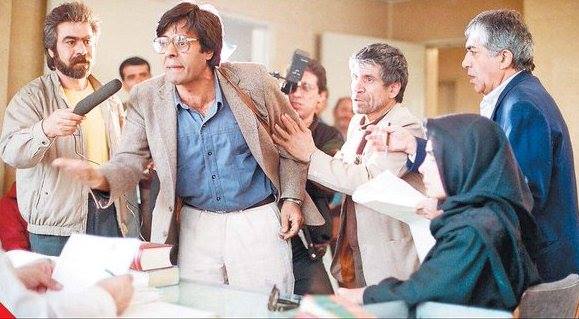
Mehrjoui’s “Hamoun,” widely known as one of the best Iranian movies ever, throws us into the chaotic life of a translator/writer called Hamid Hamoun as his marriage crumbles. Obsessed with psychology and mystical books, he searches for answers while his wife, the artist Mahshid, seeks escape with a divorce lawyer. Mahshid accuses him of being controlling and narcissistic, while Hamoun claims her spending ruins him. The film doesn’t tell you who’s right. Instead, it throws you into a wild mix of flashbacks and weird Sureal dreams, trying to show a glimpse of the writer’s subconscious. If you like deep and artistic movies, don’t miss the chance to watch “Hamoun.”
Taste of Cherry/طعم گیلاس (1997)
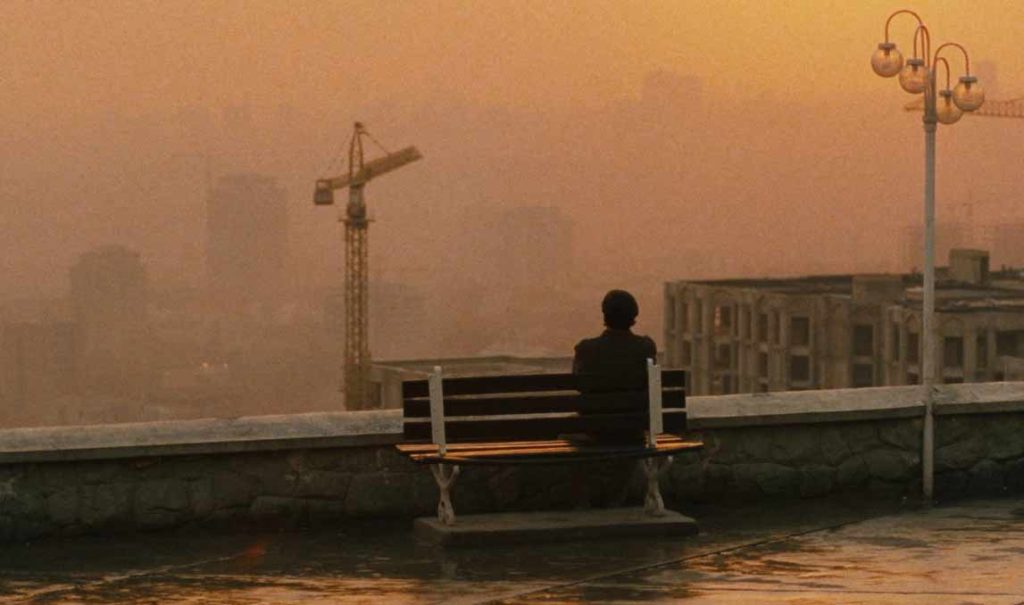
A mysterious man drives around the outskirts of Tehran, picking up people and asking them for a strange request. He encounters a Kurd soldier, an Afghan student of Islamic studies, and an older Turkish guy with a charming mustache. All these amateur non-actors get interviewed by the driver and finally asked for a bizarre yet easy-to-do favor for a lot of money. Kiarostami takes us to witness Tehran’s suburbs and its people through his masterful and naked lens. The engaging clash of different ideologies and points of view compensates for the lack of a classic storyline and makes Taste of Cherry remarkable and one of a kind.
Death of Yazdgerd/(1982) مرگ یزدگرد
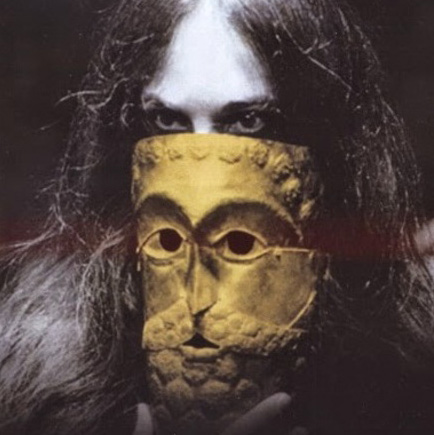
We are witnessing the dramatic final days of Yazdgerd, the last Persian king before the Arab conquest of Iran, among a poor family in a deserted mill house. This symbolic and surreal movie is based on a play also written by Bahram Beyzaei and occurs in a single location. The cast, Susan Taslimi, Mehdi Hashemi, and Yasaman Arami do a fantastic job, playing multiple roles, and applying suspense, thrill, and passion to the movie.
Mum’s Guest/(2004) مهمان مامان
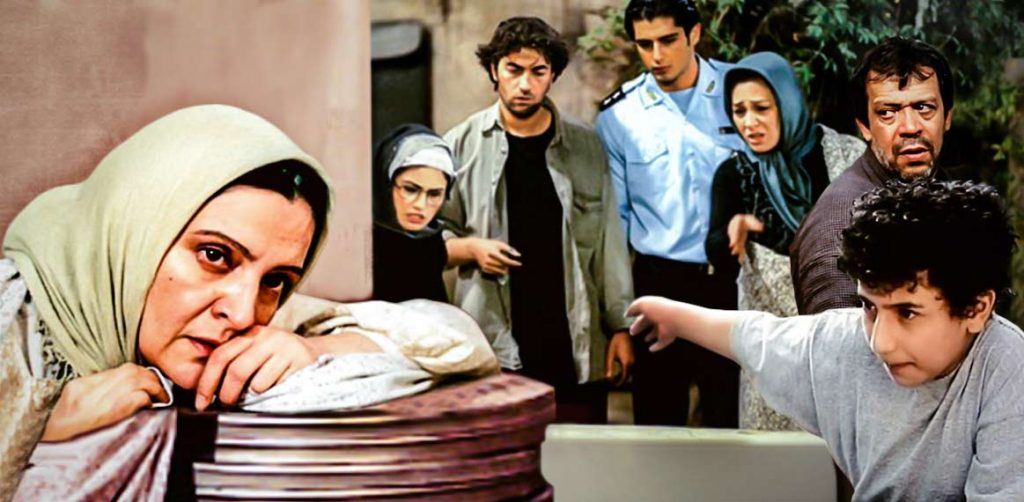
Mehman-e Maman invites us to the house of an underprivileged family to get familiar with Persian hospitality in Tehran. Golab Adineh plays the role of a mother of two children with an unemployed carefree husband. When unexpected guests arrive, she tries to arrange a decent meal in front of them. We become familiar with each character and their detailed storyline while the movie portrays Persian compassion as the neighbors start helping her as they can. The movie is full of pristine ideas, delicate details, and remarkable pictures. Mum’s Guest is heartwarming and funny while showing the realities of a dignified society stricken with poverty.
About Elly/(2009) درباره ی الی
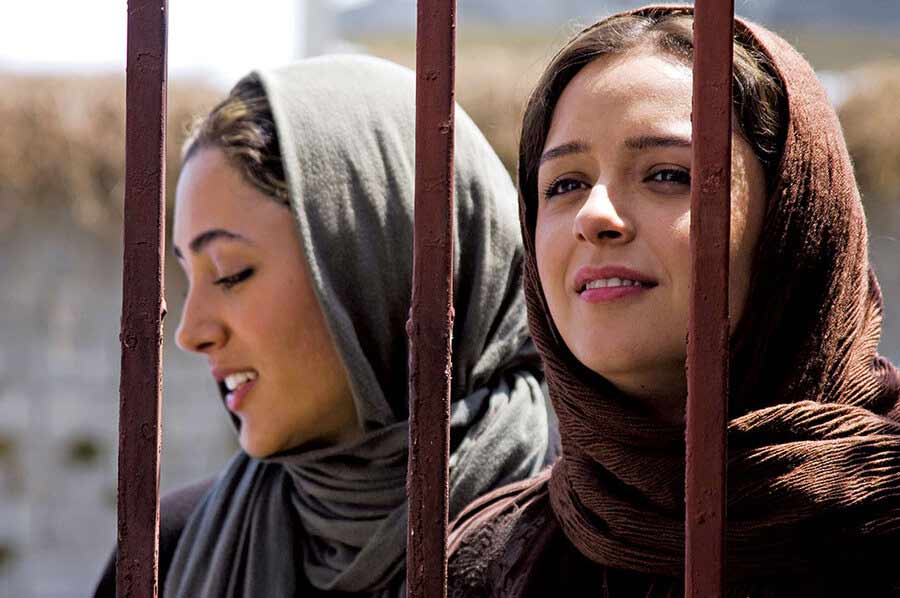
A group of young lawyers are driving towards the north of Iran, and screaming their limited freedom into the reflecting tunnels. We witness happy couples dancing instantaneously, singing beside the fire and the sea, and playing beach volleyball. As personalities and characters engage and clash, the story slowly builds the foundation for excitement and thrill.
As unstable and superficial happiness starts to thin out an accident breaks the normal routine and opens many cans of worms. Farhadi takes us to the life of the Iranian youth and shows us the struggles of a traditional society facing the modern secular world and its values. Masterful camera work, natural acting, and paying attention to many subtle details make About Elly one of the best Iranian movies ever. As it is perfectly quoted in the movie “a bitter ending is preferable to an endless bitterness.”
Dash Akol/(1971) داش آکل
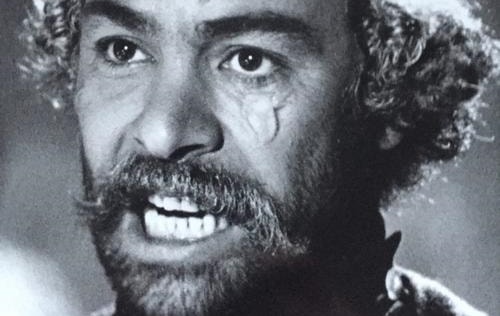
Based on a short story from Sadegh Hedayat, Dash Akol occurs in the older times when “Dash Mashti” and “Luti” which are basically the thugs, and hoodlums are carrying blades and following certain rules. Dash Akol is the toughest thug but a kind one who helps the misfortunes and is the trusted friend of a rich family in Shiraz. When the family’s father is in death bed he gives Dash Akol the responsibility of taking care of his business and family. The story becomes complicated as Dash Akol falls into an impossible love. Also, he has to deal with Kaka Rostam, a new thug boss who is now rising in his absence and creating problems for the city.
Dash Akol uses traditional Persian music, suitable use of close shots, and the unique values of the thug culture to create an everlasting movie. It also makes references to the great works of the past like Shahnameh, and how Rostam’s brother, Shoghad, betrays him in a despicable way.
A Separation/(2011) جدایی نادر از سیمین
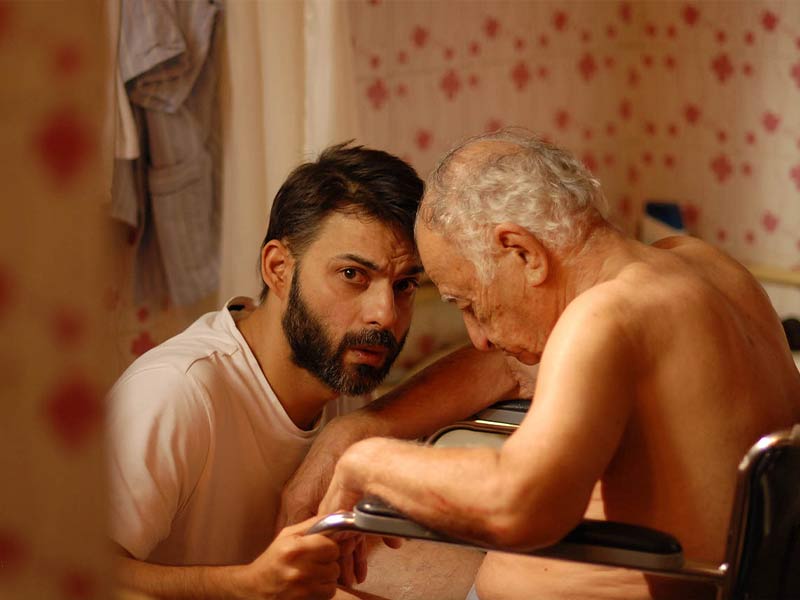
“A Separation” is the battle of two mindsets, a choice in front of every Iranian, trying to immigrate or to stay. Simin, the wife thinks the best thing for their life their daughter is to immigrate to a Western country and has prepared everything needed. Nader, the husband, on the other hand, thinks living in Iran and taking care of his sick father is the priority and that the sky is blue everywhere.
The story gets more complicated when this family’s world encounters an unexpected “push” of events. Asghar Farhadi and his Acadamy Award winner film masterfully explore and juggle complex issues such as moral dilemmas, hard decisions, and religious responsibilities. The acting is as real as it gets and the collection of film awards proves that you should not hesitate to watch this masterpiece.
Children of Heaven/(1997) بچه های آسمان
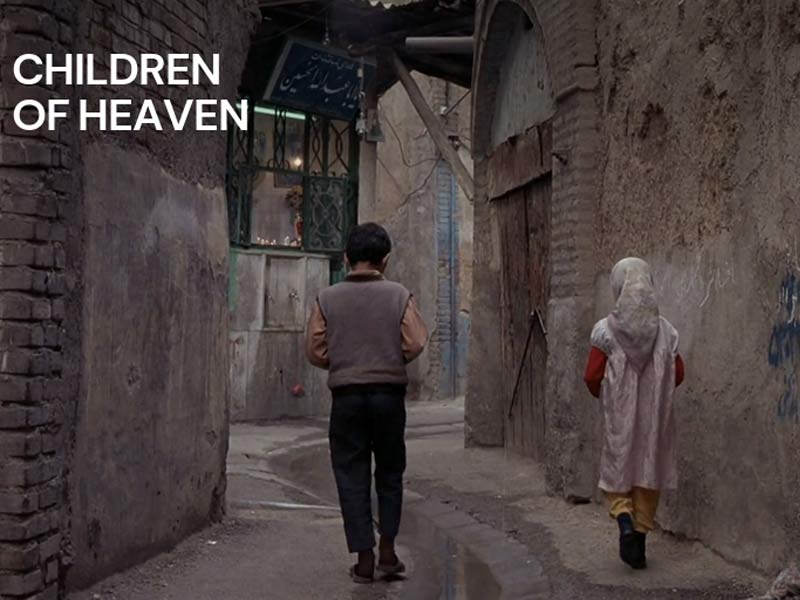
Children of Heaven was the perfect school-day movie in the 2000s. Our story unfolds when Ali and Zahra, the siblings in a lower-class family have to share a pair of sneakers for their gym class. Swapping their shoes between classes Ali has to run every day to get to Zahra’s school.
The announcement of a local race with a shoe as its third reward sparks hope in Ali’s eyes and he promises his sister “I will be third in that race.” The exciting race, where Ali gets pushed by the other kids, and the famous fish kissing his small feet in the pool are just some of the heavenly scenes in Children of Heaven. The movie doesn’t nag about poverty, but instead, it embraces life, the human spirit, and the innocence of a child’s life.
Under the Skin of the City/(2001) زیر پوست شهر
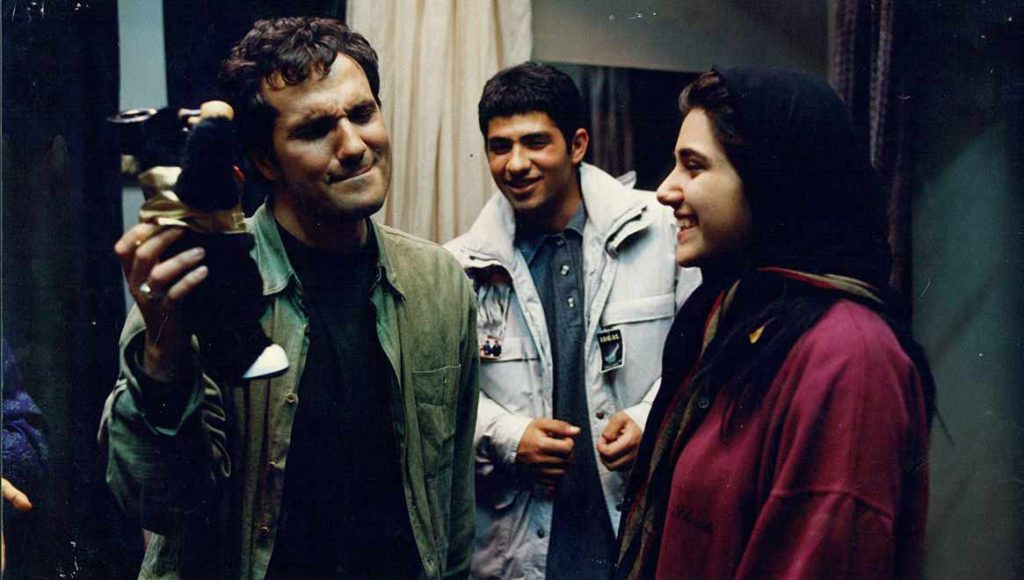
Rakhshan Banietemad takes us to the intertwined poverty-stricken alleys in the south of Tehran to witness the misfortune of a family in the struggle. The mother is a strong woman working in a textile factory, Ali is a young political activist in trouble, and their older sister Hamideh is a married woman who is being physically abused by her husband coming to his father’s house in the hope of her mother’s help. Abbas, the older brother is their main source of income, as he works for a rich family with hidden secrets.
Some important scenes are also arrays of hope portraying delicate details about Persian culture like the famous scene of Abbas dancing with the musical monkey or the way the mother shares some fruits with the family in the car. One of the saddest scenes in Under the Skin of The City is the one when Golab Adineh (the mother) has to convince her older daughter to leave their house and go back to her abusive husband. This movie is the naked truth of poverty among millions of people in Iran, yet hopes for a better future.
The Runner/(1984) دونده
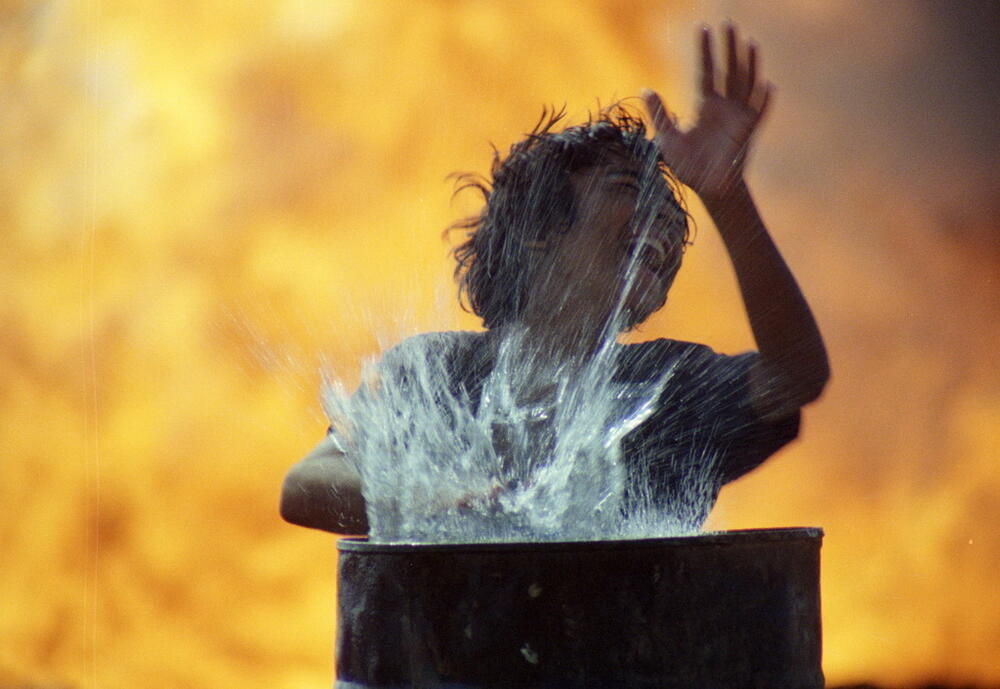
Amiru is a charming little boy, living on his own in a rusty abandoned ship in the south of Iran. For Amiru, every day is a matter of survival. His innocent eyes manifest pride and courage as he tries different jobs like gathering empty bottles in the sea or selling cold water. He is fascinated by trains, airplanes, and engines and starts collecting airplane magazines even though he can’t read a single word.
He visits a particular airplane every day and starts dreaming about becoming a pilot. Amiru spends most of his days running, he races with his friends to catch a train or runs after the customers who didn’t pay. Running becomes a routine in his life, as he slowly learns about life and grows to be a man in the body of a child.
The Runner takes us to see life through the eyes of honorable working children. It’s filled with exciting scenes of Amiru running and shouting. Its famous scene, the dance among fire and ice, is an unforgettable part of Iranian cinema.
A Simple Event/(1974) یک اتفاق ساده
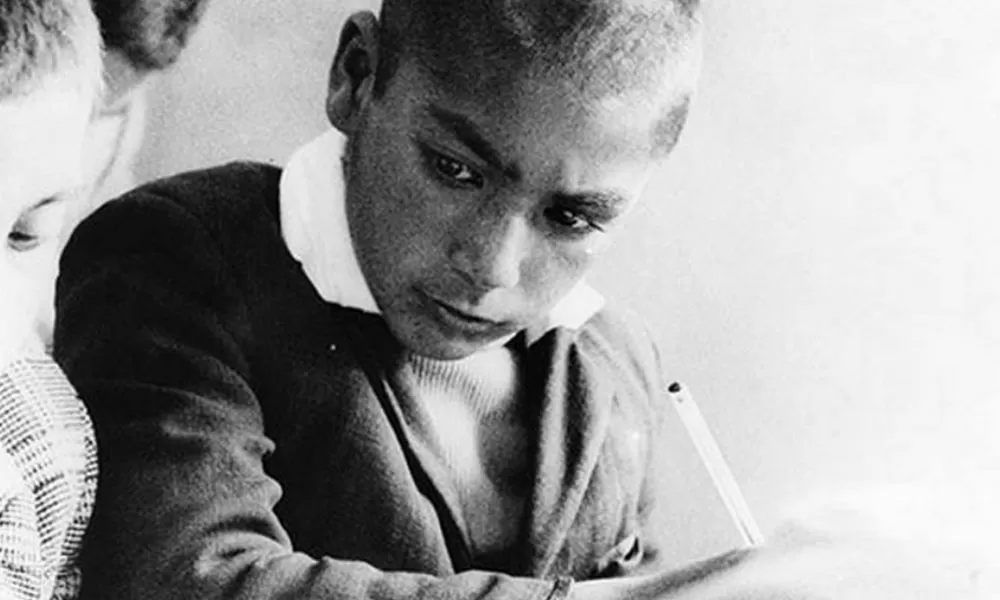
A simple event shows the routine daily life of a kid called Mohammad who lives with his sick mother, and fisherman father. His life is a circle of getting up, going to school, having a simple lunch, delivering illegal fish his father caught to the market, and taking the money to his father who is waiting in the bar and going to sleep. We witness these events repeatedly as this minimalist movie reminds us of the works of Raymond Carver and Robert Bresson.
A Simple Event doesn’t have many dialogues. It is as simple as it gets, trying to show the life of an obedient boy who gets punished at school for not answering the questions and gets beaten by his father at home. The lack of human emotion between the characters, and the naked reality of poverty leaves a sad feeling in the heart of the viewer.
the Red Ribbon/(1999) ربان قرمز
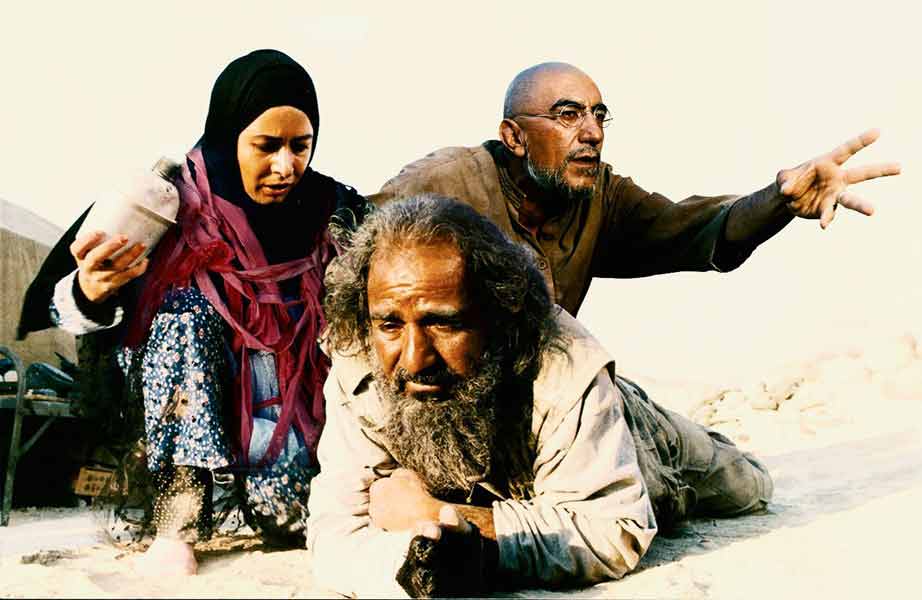
Let’s introduce our only characters in the Red Ribbon. Davood is a half-mad soldier of the Iran-Iraq war who is now on a mine-clearing frenzy. Jomeh is a mysterious Afghan refugee, living in a Tank graveyard, with his exotic music instrument and wild philosophical views. Mahboobeh is a stubborn woman in search of her only hope, an inherited family house in the ruins somewhere between Iran and Iraq.
They encounter each other on different occasions. Their differences in ideologies and points of view become more complicated to the point that a duel of truthfulness on the minefield between Davood and Jomeh, becomes the most famous scene of the movie. The Red Ribbon is a symbolic clash of three different personas and their take on life, war, and important values.
Girl’s Dormitory/(2004) خوابگاه دختران
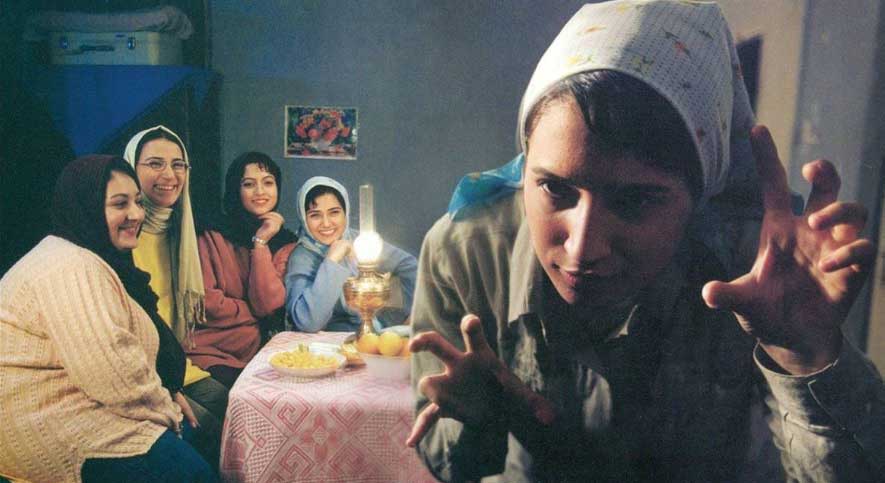
Roya and Shiring get accepted into a university and move to a city close to Tehran. The university’s dormitory is under construction and they have to rent the house next to it. The local women tell them about the rumors of a satanic force living in that village that steals brides but the young students don’t believe them.
After a couple of nights, the girls start hearing fading screams from an abandoned ruin close to their house at night. The movie becomes thrilling and scary when one of the girls encounters something unusual on her wedding night. The Iranian horror genre doesn’t have much to offer but Khabgah-e Dokhtaran is a successful movie made with a low budget and no special effects (the formula for good horror movies.) It might look amateurish and simple at first but can make you scream if you watch it till the end.
A Cube of Sugar/یک حبه قند (2011)
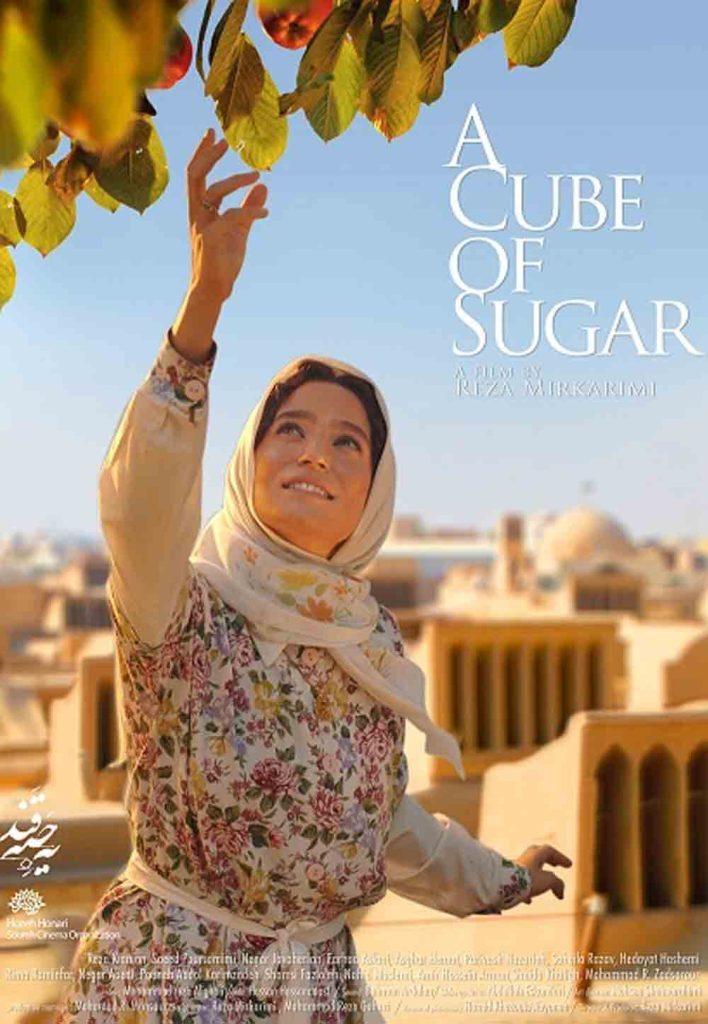
Brace yourself for a festival of vivid colors, and lights in a gorgeous Yazdi house full of flower pots and garden squares. A Cube of Sugar is a fast-paced, cheerful movie exhibiting the days before an interesting wedding in Yazd with all the traditions, dances, and whispers among women. The ironic twist in the middle of all these is that the groom lives in America and comes to the wedding as an image on the laptop screen. Everything is working as planned until a cube of sugar gets mischievous and changes the movie.
Watching the movie, you can experience a Persian wedding and get familiar with different aspects of Persian culture. The vibrant costumes, authentic atmosphere, and a great selection of actors make this movie memorable.
Fish & Cat/(2013) ماهی و گربه
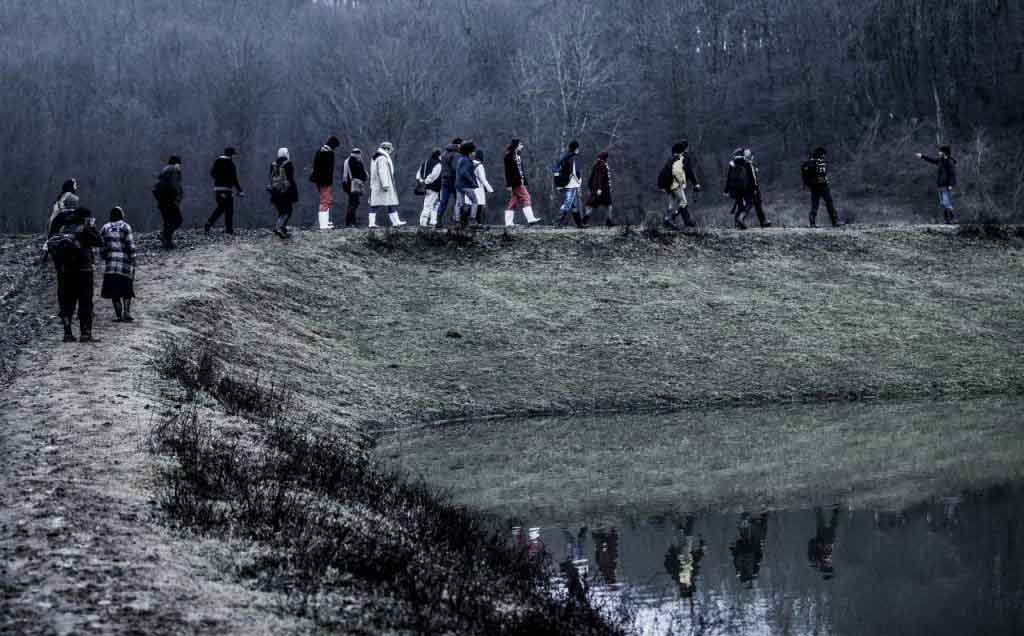
Based on a true story, Fish & Cat shows the events occurring in a college student camp in the North of Iran and the interactions between the students and the owners of a creepy restaurant. The students are gathered here for an annual kite festival. The disappearance of one of the girls, Maral, ignites the rumors about a murder that happened last year in this camp.
The movie is recorded in one take with no cuts. The camera follows each character to get to the next one, seeing each event from multiple points of view, and rotating in a circle.Mahi va Gorbeh is a unique movie that plays with the concept of time. The atmosphere is grey, the relationships are vague and the ending is refreshingly surprising.
Redhat and Cousin/(1994) کلاه قرمزی و پسرخاله
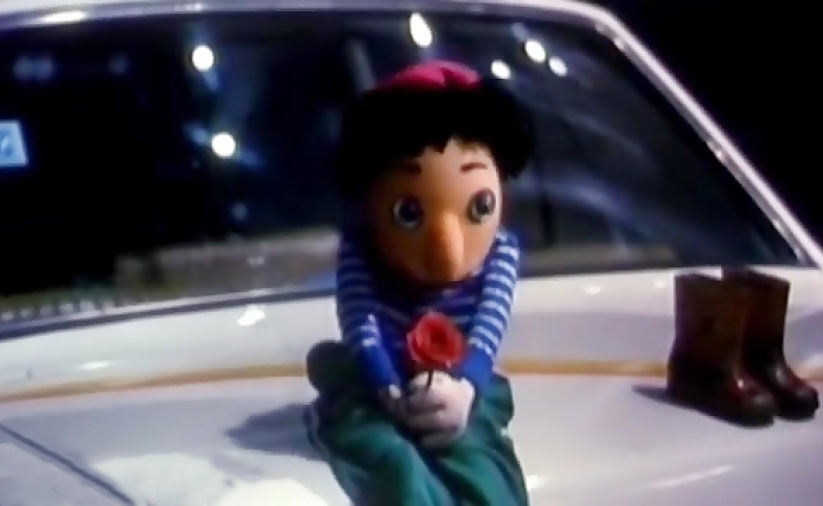
Kolah Ghermezi (redhat) is a lonely boy living in a small town with his Khaleh (aunt) and Persar Khaleh (aunt’s son). Since Kolah and his aunt don’t have a TV, he spends his days in front of the TV shops listening to Aghaye Mojri saying wonderful kind words and addressing every child and promising that “you with your beautiful eyes. Yes, you. You can come here, and become my co-host, we will do the show together.”
Kolah Ghermezi looks at this invitation literally and starts going to Tehran to meet his beloved children’s host. The only problem is that he is not hit by the reality that all those kind words were only on TV and Aghaye Mojri is a grumpy guy with loads of problems in his private life.
He starts secretly helping him which creates many hilarious moments. Kolah faces competition in the form of a terrifying electronic dinosaur, meets the love of Mojri’s life, and engraves his memory into every Iranian child’s mind. This comedy musical can make you laugh and cry multiple times. Kolah Ghermezi is not just a muppet or doll, he is an important part of Iranian culture and art.
Hasan the Bald/(1970) حسن کچل
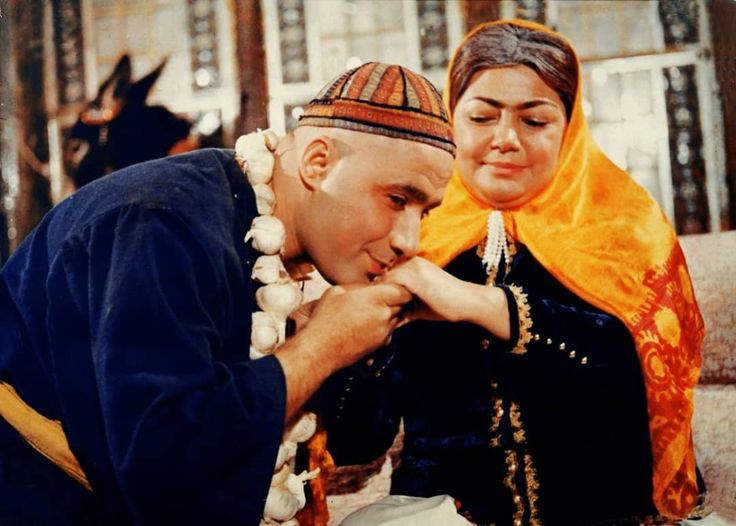
It’s fair to say that nowadays notable musical movies are pretty rare in Iranian cinema. Most Persian movies are realistic dramas about poverty, social issues, or war.
Hasan Kachal takes us to the old Persian stories of genies, Jinn, and Pari (fairies) via traditional music, poetic dialogues, and exotic scenes of Hammam, and Zoorkhaneh. It’s based on the folk story of Hasan Kachal, the laziest boy in town who gets tricked by his mother and sent into the real world to experience life and become a man.
He faces sarcastic vendors, fake Pahlevans (heroes), playful dancers, and mythical dervishes. He falls in love with a girl named Chelgis and has to rescue her from the evil monster with the help of his doppelgänger (jinn). The movie is a joy to watch if you like Persian culture, fantasy, and traditional music, and has some comedic moments as well.
The Lizard (2004) مارمولک
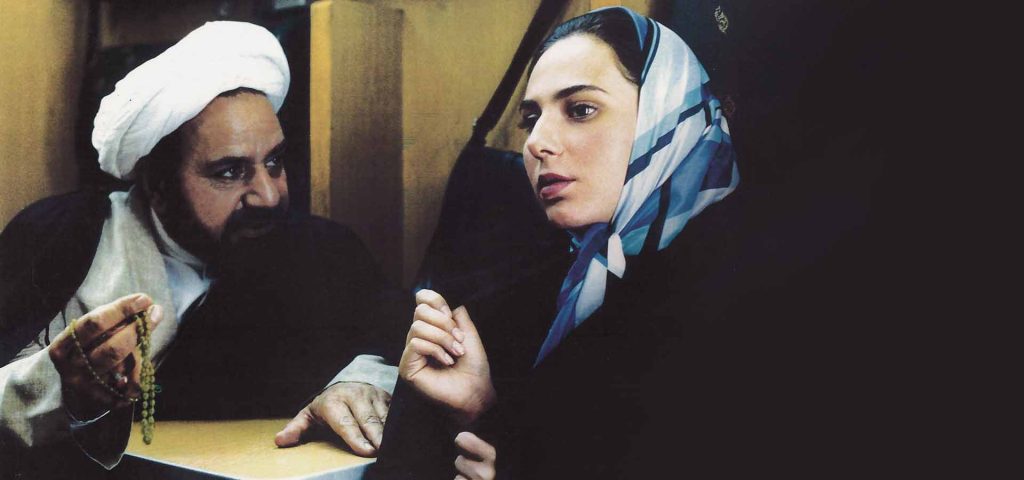
Reza Marmoolak (the lizard), a prisoner with the ability to climb any walls, cuts himself in the prison and is taken to the hospital. There, he is in the same room with an influential Mullah, who introduces him to a meaningful sentence. “For each person in the world, there is a unique way of finding God”.
Reza steals Mullah’s clothes and escapes the hospital in disguise. When he attempts to leave the country, the people of a village near the border mistake him for the promised mullah of their mosque. Reza starts preaching to the people in his own way, using the famous sentence he heard, and also using his own criminal ways to handle different situations.
He becomes popular among the people to the point in which people start believing in his miracles! Although The Lizard is a movie to shows that anyone can change and appreciate the truth, the sensitive nature of its theme caused lots of controversies, and it was taken off the Iranian cinemas after a short time.
Where is the Friend’s Home?/(1987) خانه ی دوست کجاست؟
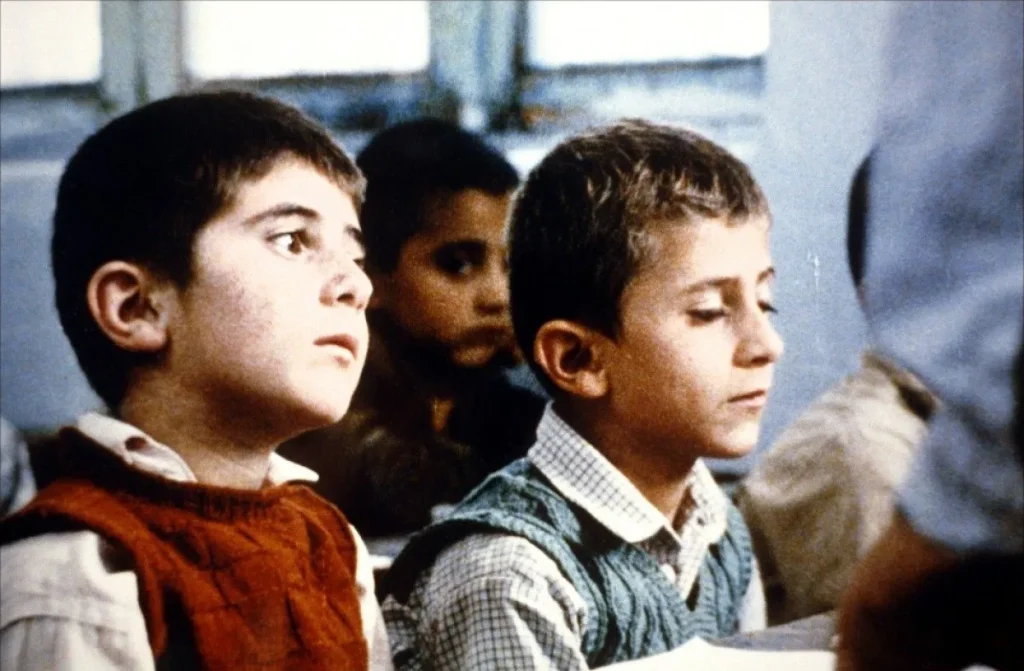
This masterpiece in simplicity that occurs in a northern village of Iran is about the struggles of Ahmad, a kind-hearted student trying to return his friend’s notebook by nightfall. Khaneye Doost Kojast uses friendship, realism, loyalty, and moral dilemmas to engage us in the routine life of a child.
Abbas Kiarostami has mixed many cinematic techniques such as developing a style of non-acting, repeated frames, and using everyday experiences. The famous zigzag road in “Khaneye Doost Kojast” takes us to the innocent yet complicated world of children and opens a fresh window in front of our consciousness.
Close-Up/ (1990) نمای نزدیک
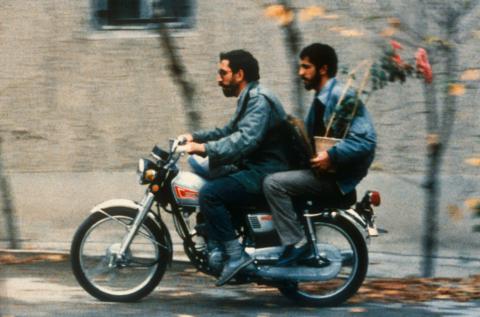
Close-Up is a combination of documentary and fiction. In Close-Up we follow the events happening to a real-life man Hossein Sabzian who is fascinated and obsessed with Mohsen Makhmalbaf, a famous Iranian director and writer. He introduces himself as Makhmalbaf to a middle-aged woman, convincing her whole family that he is actually Mohsen Makhmalbaf and he would use this family in his next movie. This starts an important week in Hossein Sabzian’s life.
Every character is played by the people involved in the actual real-life events. The movie portrays the authentic emotions and struggles of the characters. The storyline is fairly unique, and the camera work is exceptional. The director plays with the philosophical concept of reality as he has famously said: “We can never get close to the truth except through lying,”.
Life and Nothing More(1992) زندگی و دیگر هیچ
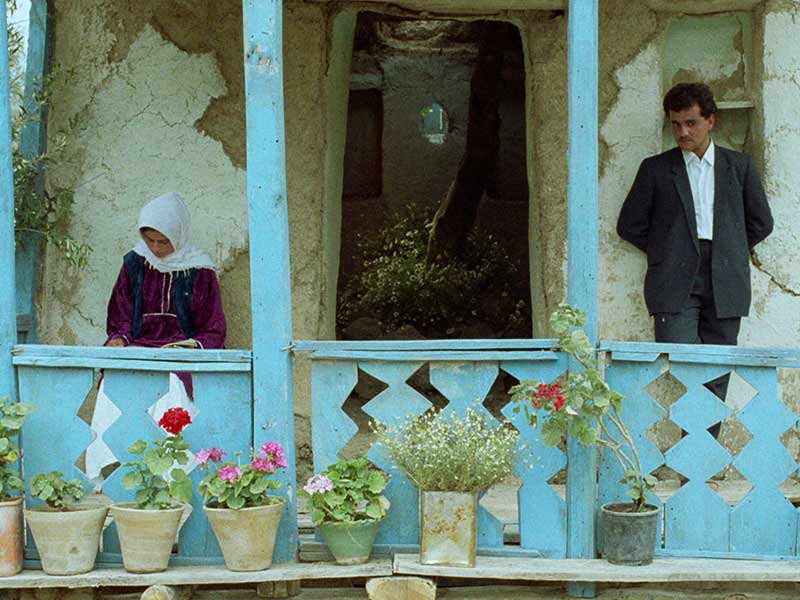
The second movie of the Koker trilogy is created right after the deadly earthquake in Roodbar, and Manjil. The director of Where is The Friend’s Home is worried about his beloved cast, the Ahmadpoor brothers, so he drives toward the North.
Life and Nothing More uses one of Kiarostami’s signature locations and points of view which is a moving car as also seen in Taste of Cherry. We witness the naked truth of people after the earthquake, the ruined houses, crying mothers, and the life that goes on. The director played by Farhad Kheradmand talks to different people about their problems and lost ones while searching for his actors. The movie is a skillful demonstration of life after a disaster and the sadness and hope that remains.
Through the Olive Trees (1994) زیر درختان زیتون
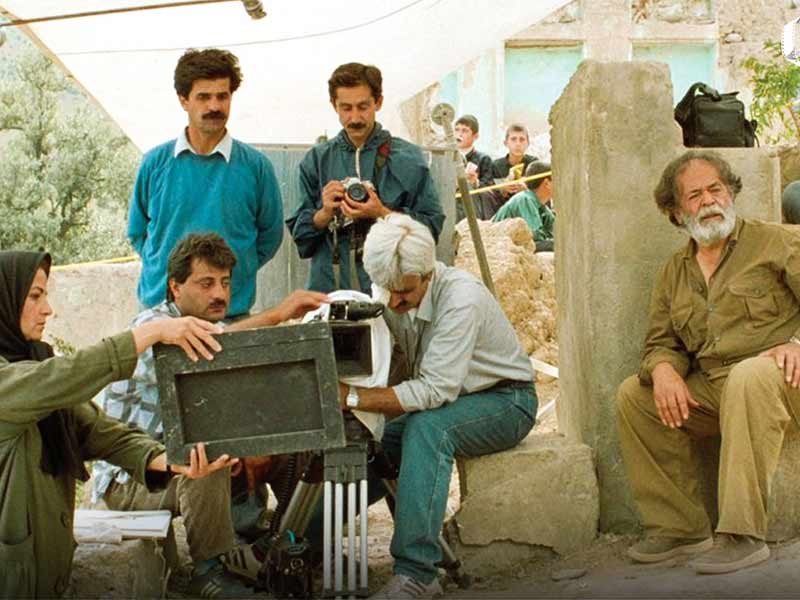
A film within a film.
The last movie of the Koker Trilogy is a docudrama about a group of filmmakers working in the North of Iran. We go through behind the scenes of the movie “A Life and Nothing More” as Mohammad Ali Keshavarz is acting as himself in the role of the director, Abbas Kiarostami.
When the relationship between the local stars of the movie, Hossein and Tahereh becomes problematic, the director steps in. The pure love story, and the stubbornness of Hossein in his love, are the main subjects of Through the Olive Trees. The movie is a tribute to the earthquake‑stricken cities of Roodbar, and Manjil, and their kind people. The finale is an exciting and touching long shot through the olive trees and makes the curious viewer guess the ending.
The Wind Will Carry Us(1999) باد ما را خواهد برد
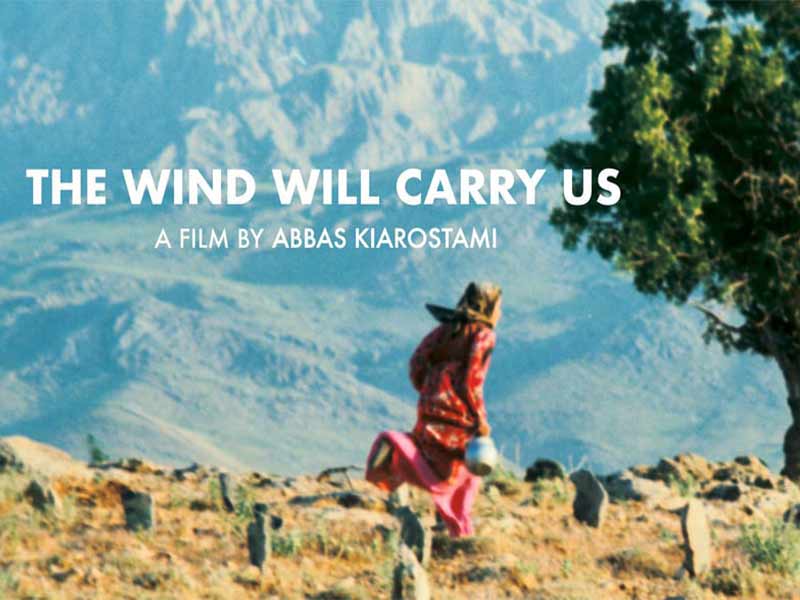
The wind will carry us is a treat to the eye. The location Siah Darreh (Black Valley), is a magical mountain village with interconnected white houses in the west of Iran. A group of filmmakers arrives to record the funeral of a sick old lady, on the deathbed. The old lady starts getting better but Mehrdad, the group leader, refuses to go back despite being under pressure by his boss as he has a feeling that the old lady would die soon.
He meets a couple in love (reminders of Shirin and Farhad), a sarcastic old lady who owns a cafe, and a doctor who gives Mehrdad some sedative drugs for the sick lady. The story purposefully makes us guess and assume but doesn’t give straightforward answers. Every shot is a work of art, and the acting is impeccable.
Killing Mad Dogs/(2001) سگ کشی
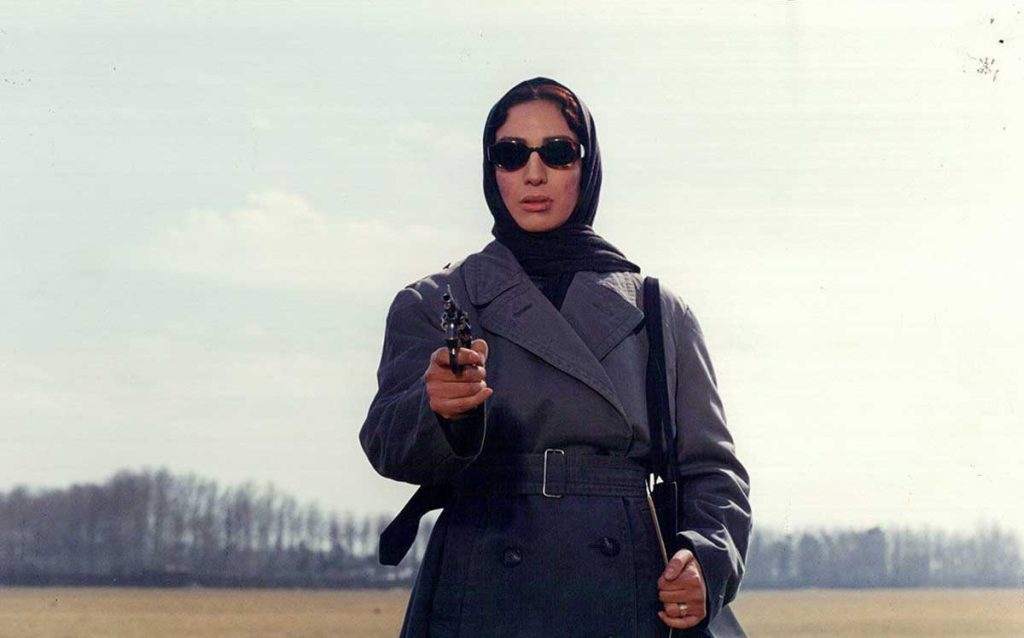
A woman against the world!
Golrokh, an Iranian writer enters the world of thugs, criminals, and big-shot businessmen in an attempt to settle her husband’s debts. She faces many obstacles in her path, finds out about some shocking secrets of her husband, and slowly changes into a different person trying to conquer the masculine world of finance in Iran. There are not many high-quality thriller movies in Iranian cinema and Sag Koshi as a mysterious thriller, is a mesmerizing rare gem. Beyzaei plays around the censorship restrictions in Iranian cinema masterfully to make exhilarating action scenes and emotional drama. Get your popcorn and tissues ready and enjoy!
Bashu the little stranger/(1989) باشو غریبه ی کوچک
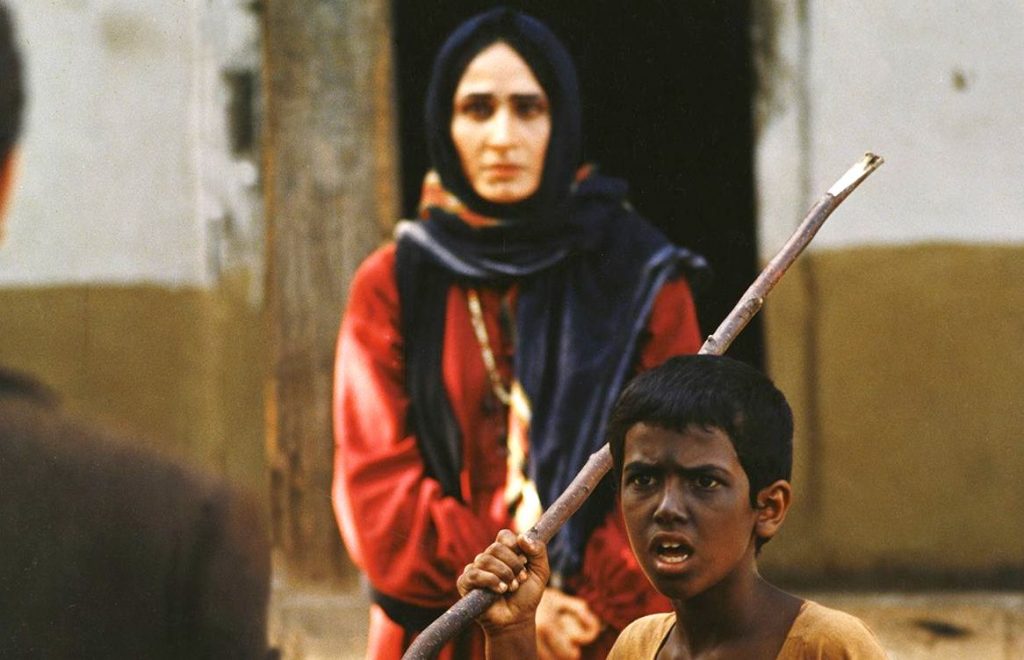
We follow the adventures of a young black child named Bashu who escapes from a war-torn region and ends up in a remote village in the north of Iran. He feels scared as he can’t communicate with anyone and has painful memories of his family being attacked. However, everything changes when he encounters a remarkable and strong woman who tries to help him get stronger and face his fears. In turn, he helps her in her daily farm work and tries to change her judgmental attitude towards people, especially the village’s children.
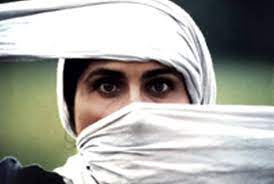
Their journey is characterized by authenticity and rhythm as they discover the child’s talent for mathematics. Determined to show Bashu’s capabilities to society, the film explores themes of identity, belonging, and the human connection that transcends cultural and ethnic differences. “Bashu, the Little Strange” is a warm and captivating movie, the film has gained international recognition and critical acclaim for its powerful storytelling and portrayal of the effects of war on individuals. It addresses themes of displacement, prejudice, and the universal human desire for understanding and compassion.
Travelers/(1992) مسافران
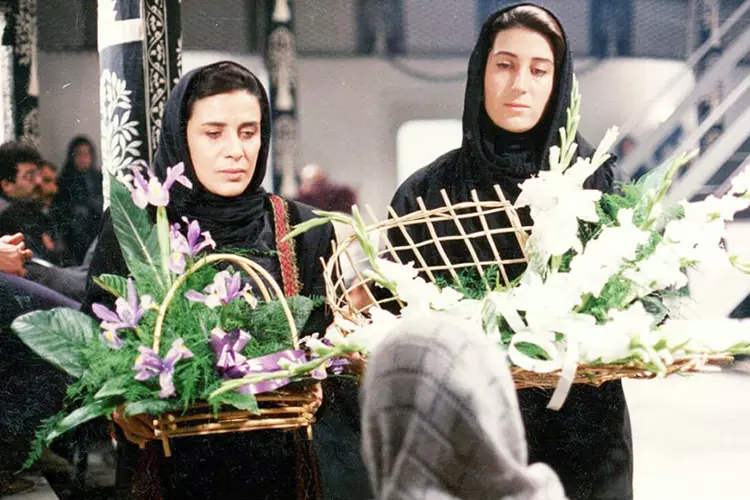
A woman named Mahtab is getting ready to travel to Tehran to participate in the wedding of her sister along with her husband, her two mischievous boys, their driver, a village girl, and a promised mirror for the wedding. Before the car starts moving she looks at the camera and announces that we are all going to die on the way. Like any great picture, Travelers hooks you in the first 5 minutes. In Travelers, we look at death from different philosophical points of view, while powerful bold monologues remind us of dramatic plays. I’m still struggling with the surprising ending of the movie as I invite you to watch this work of art by the great Bahram Beyzai.
Ballad of Tara/(1979) چریکه ی تارا
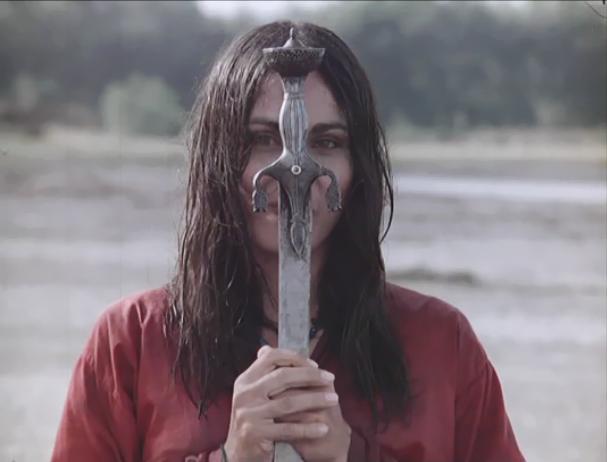
When Tara (played by the magnificent Susan Taslimi), a prideful widow returns to her village, she finds out that her grandfather is dead. She discovers a mysterious sword among his items that starts to cause Tara trouble. Whenever she tries to get rid of the sword, it comes back and gets in the way of her until she meets the spirit of a soldier who claims that the sword is his.
Meanwhile, his late husband’s brother, and a young guy called Ghilich, want her hand in marriage. She is now under pressure by these two men while obsessed with the spirit of the ancestor, and unable to answer their proposals. Ballad of Tara is a symbolic movie, full of cultural and mystical references. Its purposeful and complicated scenes are a treat to watch and leave us with visual satisfaction.
The Cow/(1969) گاو
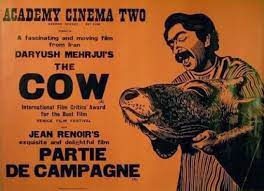
The Cow takes us to a rural village where Masht Hassan owns and loves the only cow in the village. An unfortunate event happens to his only companion and source of livelihood, his beloved cow. Consumed by grief and unable to cope with the loss, he starts acting like a mad person which starts the main part of our story.
In the famous scene where Masht Hassan is washing the cow, you can see in his eyes how attached he is to the animal. This symbolic movie, based on a short story by Gholam Hossein Saedi ignited the sparks of a revolution in Iranian cinema and helped it pass the cliché mainstream movies known as “Filmfarsi.” The movie can be a reminder of the French masterpiece Au hasard Balthazar (1966) by Robert Bresson and is a significant work of Iranian cinema.
The Tenant/(1986) اجاره نشین ها
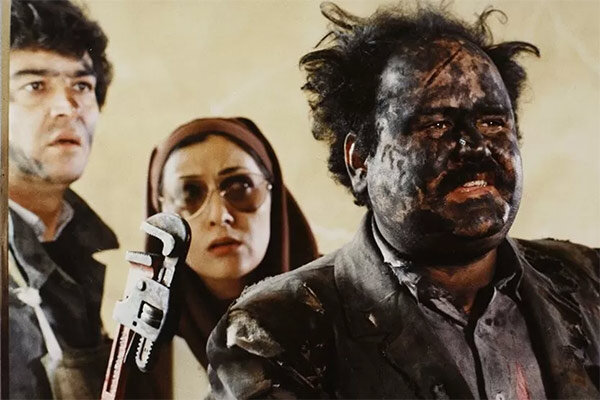
The clash between the tenants and the landlord of an apartment in the middle of nowhere is the main subject of The Tenant. Each tenant represents a different aspect of Iranian society, and the film explores their lives, relationships, and struggles. It’s widely known as the most surprising Iranian satire movie among critics and remains a nostalgic comedy for Iranians. This film criticizes cultural issues by using metaphors, comedy of situations, and sarcasm while warmly exploring human nature and societal dynamics.
Pari /(1995) پری
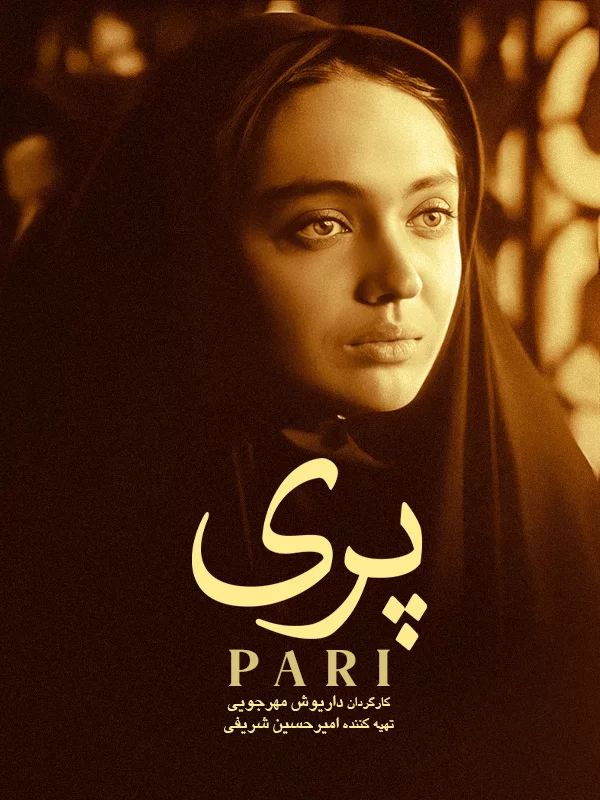
After finding an old book in her dead brother’s room, Pari, a confused young girl starts a journey to discover Persian Sufism. She becomes obsessed with the book, especially an old mystic verse that she starts repeating. She is faced with different issues, as she shows aggression toward the people in her life. Things become more clear for her, as she mentally and spiritually grows and finds out about some hidden secrets.
Interesting Fact: The movie faced some controversy as J.D Salinger was unsatisfied with the claim that Pari was based on his novel Franny and Zoey, and blocked a planned screening of the film at Lincoln Center in 1998.
Mr. Gullible or Mr.Naive/(1971) آقای هالو
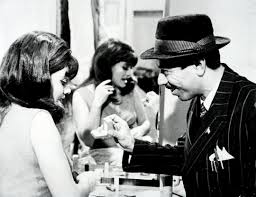
A simple-minded villager, played by the genius actor, Ali Nasirian, moves to Tehran to work as an office employee. Amazed by the complexities of life in the city, he falls in love with a girl without knowing that she is in fact a prostitute working in a bar. Mr.Naive reminds us of Dostoevsky’s great novel The Idiot, and the way it looks at life values, morality, and compassion. It looks funny, and you might make fun of the main character at first, but eventually gives us valuable lessons that are sometimes forgotten in our fast-paced modern world.
Qeysar/(1969) قیصر
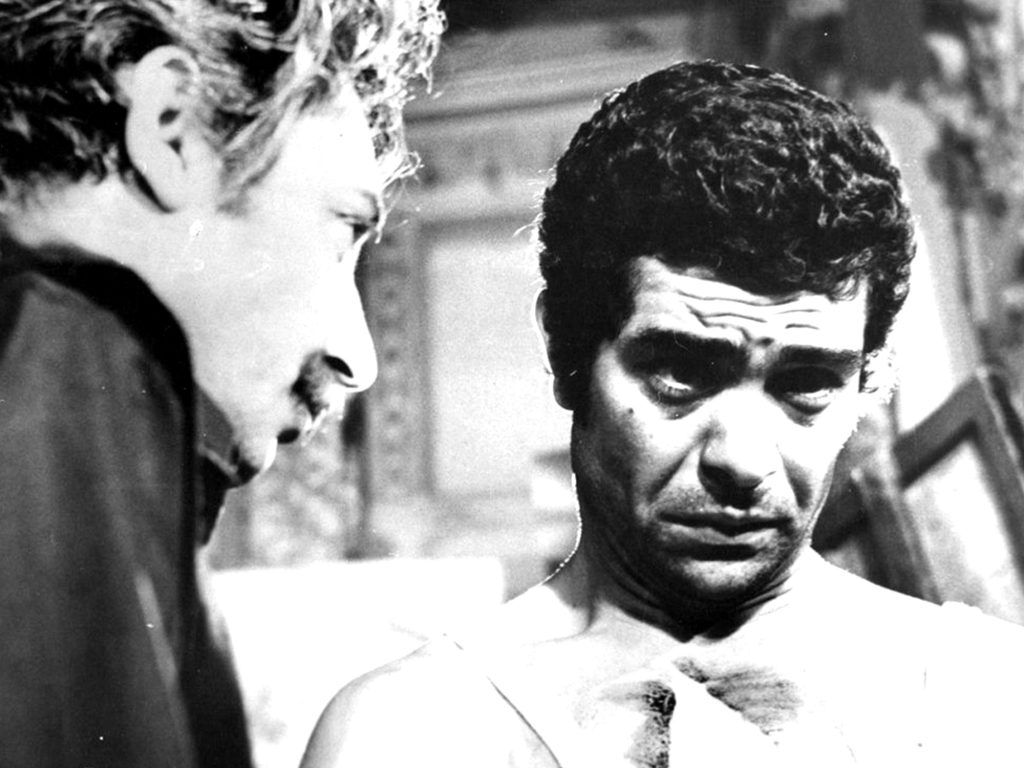
Qeysar and Farmoon are two brothers who quit their thug life years ago and are living an honest life. Their younger sister Fati gets raped by a criminal called Mansour, one of the Ab-Mangool brothers, and commits suicide. Farmoon the older brother rushes to the rapist’s house and tries to strangle him with his bare hands and gets stabbed in the back by one of the brothers and dies yelling the famous line “Qeysar, where are you? They killed your brother”.
The air now smells like blood and revenge when Qeysar, played by the great Behrouz Vossoughi, comes back to find his family taken apart and takes the matter into his own hands. The movie is a milestone, starting a new wave of protests, and revolutionary movies. The main character, Qeysar, not only became a symbolic hero of honor and justice but also is responsible for the thug fashion of young Iranian guys in the 70s and 80s.
Mainline/(2006) خون بازی
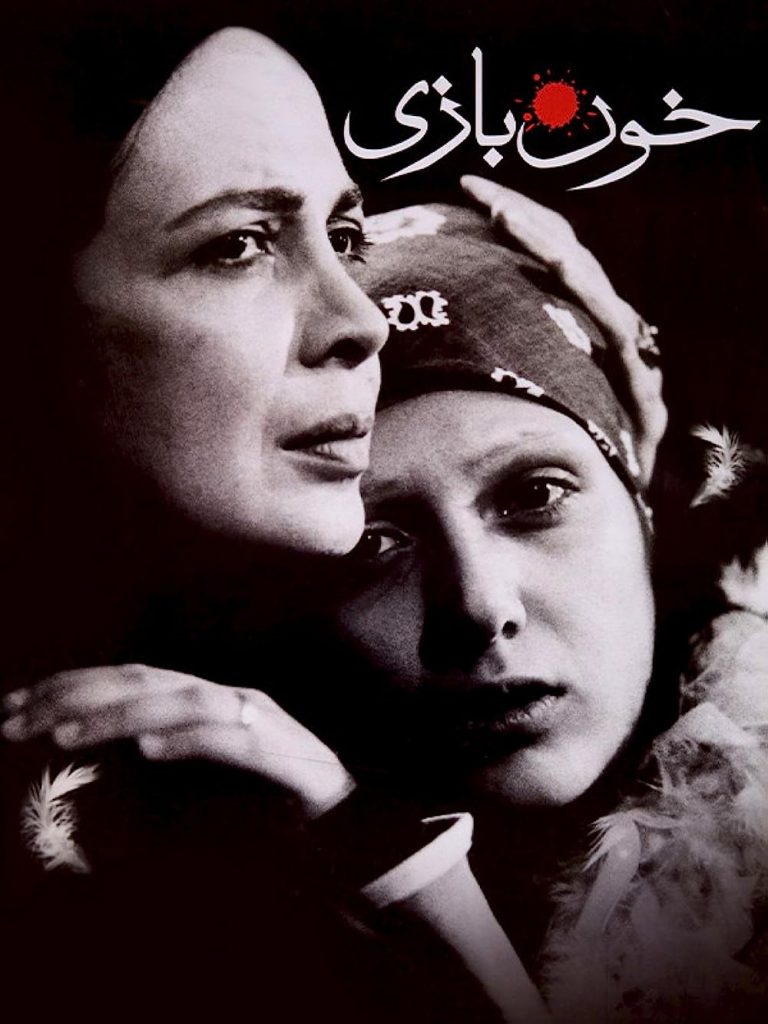
Khoon Bazi means playing with blood which is an expression among heroin users, and the way they have to let the blood enter the syringe, get mixed with the heroin, and slowly get back to the veins. The movie revolves around an upper-class young girl in search of heroin while her mother is following her, trying to take her to rehab.
The girl is engaged with a handsome and successful guy living abroad who becomes suspicious when the girl starts wearing more makeup to cover the effects of addiction on her face.
We get familiar with the underground drug world of Tehran, shown in black and white or colors, depending on the situation. Khoon Bazi is a pioneer movie, breaking the taboo of showing a female addict from an upper-class family and showing how everyone is vulnerable to the white powder beast.
The Glass Agency/(1998) آژانس شیشه ای
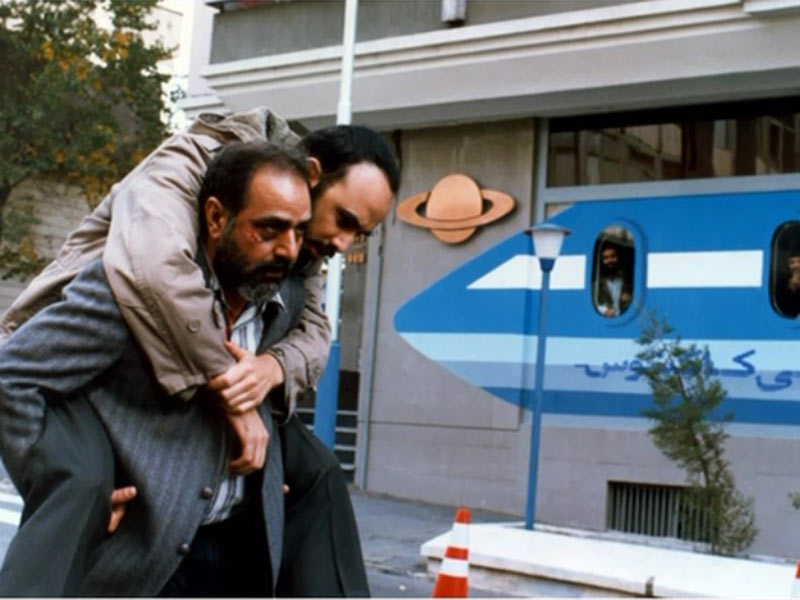
Abbas, an injured war veteran comes to Tehran for his neck treatment and meets Haj Kazem, his old commander in Iran-Iraq. Haj Kazem now starts helping Abbas who has been told that the only way he can survive is to go abroad and get operated, as soon as possible.
The commander sells his car and takes Abbas to a travel agency to get the tickets, but the money is not yet in his hands. The agency denies waiting for the money and cancels their tickets.
The situation becomes chaotic and Haj Kazem starts taking matters into his own hands. The movie is a controversial thrilling drama with memorable dialogues and a number of exciting action scenes. It tries to remind us of certain values of Iran’s holy defense, especially in an ongoing debate between Haj Kazem and an intelligence agent called Salahshoor.
Leily Is with Me/(1996) لیلی با من است
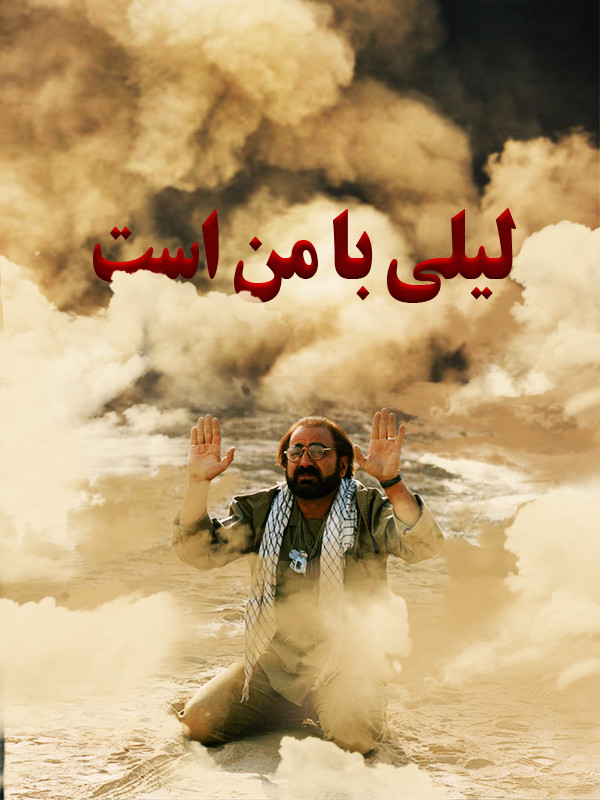
In a comedy occurring in the Iran-Iraq war locations, a series of unfortunate accidents take Sadegh, a photographer, further toward the frontline of battle. As he is preparing for this journalistic mission, Sadegh’s wife dreams about him getting killed on the frontline. Even the word “frontline” scares the hell out of him now as the movie makes us laugh with its unique form of situation comedy.
Sadegh keeps failing to avoid going further toward the promised frontline while trying to look brave in front of his coworker. On top of being a collection of funny scenes, “Leyli Ba Man Ast” also follows a certain mystical ideology based on a famous lyric with this concept: if my beloved didn’t love me, why did she break my bowl and not the others?
The Bride of Fire/(2000) عروس آتش
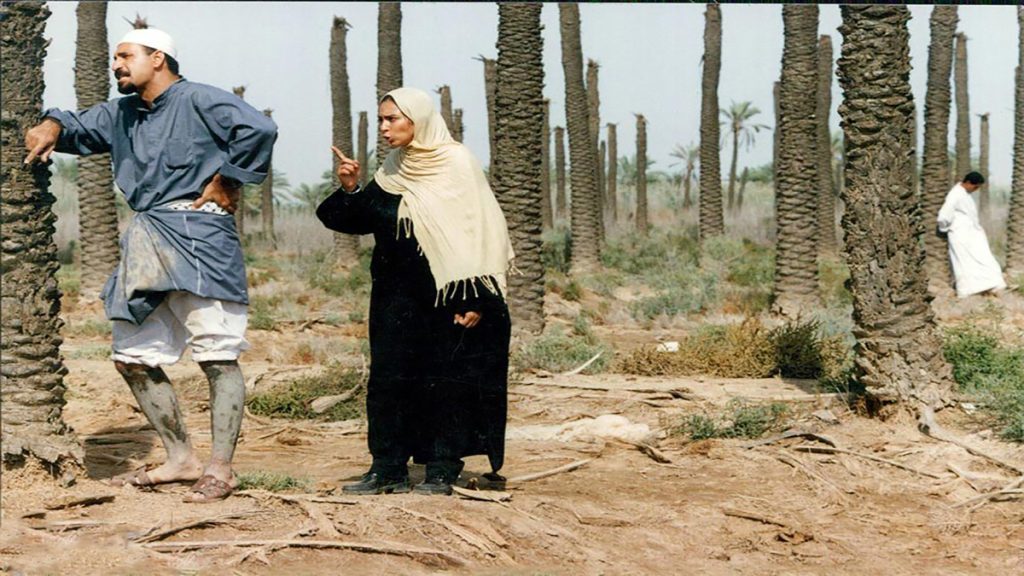
Many Iranian girls have been killed by their jealous brothers, fathers, or cousins to save the honor of the family and would not get punished by Iranian laws since the girl’s parents could forgive the murderer. In our movie, Ahlam, a young medical student living in Tehran is in love with a doctor called Parviz. Meanwhile, she is under pressure by her tribe’s traditions and laws which indicate that every girl in the tribe must marry their oldest cousin. The law is trying to keep their lands in the family (Ashireh) and avoid inheritance complications.
She decides to travel to the South, face her family, and deal with the situation personally. The situation gets more complicated when Farhan (the cousin) and Ahlam’s aunt try to convince her of this loveless marriage. The controversial movie is way ahead of its time, breaks many taboos, and tries its best to portray the problems women face in a patriarchal, traditional society.
Beautiful City/(2004) شهر زیبا
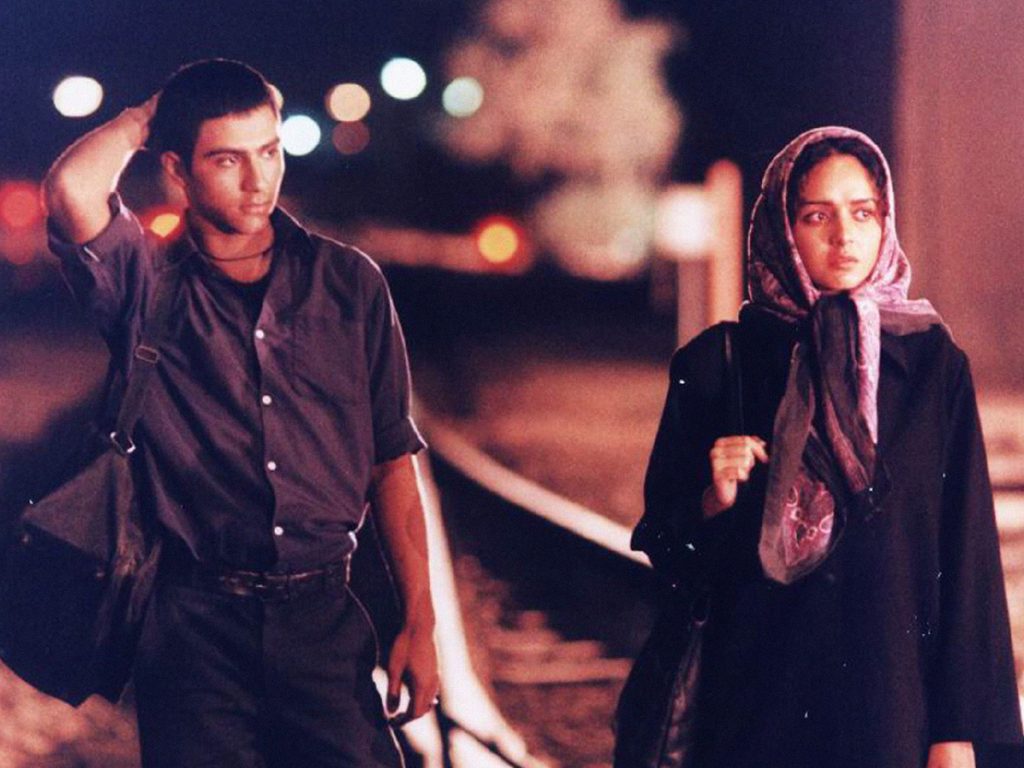
Akbar and Mahboobeh are both 16 years old and madly in love. When they find out that Mahboobeh has to marry someone else, they decide to end their own lives. Akbar first kills Mahboobeh, but then hesitates and can’t finish himself, which makes him a murderer at the age of 16, and has to go to juvenile prison.
Our movie starts when he is 18 years old and is going to be executed soon. Beautiful City is the story of Akbar’s sister Firoozeh and his closest friend in prison Ala trying to save him from execution. They start visiting Mahboobeh’s father, Abolghasem every day, to convince him to forgive Akbar and settle for the weregild (blood money), instead of the execution.

The story gets complicated as the Iranian law indicates that the amount of Weregild for women is half the amount for men. If a guy kills a woman, the family of the girl has to pay half the price of wergild in order to execute the killer. Abolghasem, a dismissed worker who doesn’t have enough money, is pressured by society to forgive the killer and now has a decision to make. The subtle details, natural acting, and authentic shots of poverty make Beautiful City a movie worth watching.
The Border Cafe/ (2005) کافه ترانزیت
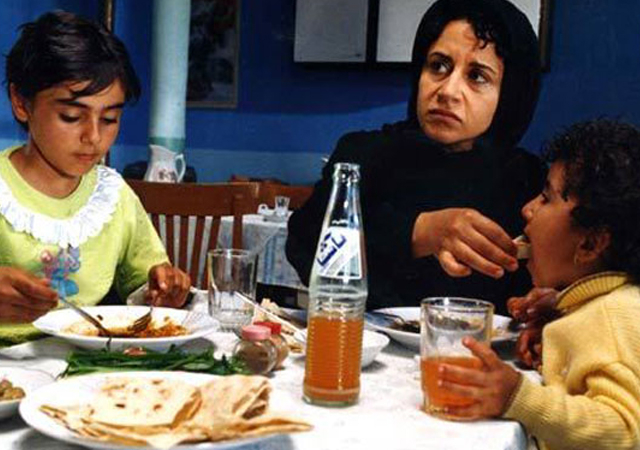
In some Turkish parts of Iran, the tradition suggests that a widowed woman should get married to her husband’s brother even if the brother is already married. After the death of her husband, Reyhan, a single mother of two, refuses this proposal made by the married brother of her husband and tries to reopen her late husband’s cafe near the border.
Reyhan fights against the deep-rooted restraining beliefs against women, as she faces many obstacles made by her husband’s family and society. She also meets interesting passengers, like a runaway Russian girl and a charming Greek driver who have their own share of stories.
Cafe Transit blows a wind of hope for women, in a patriarchal society that is changing rapidly and is throwing away harmful, prejudiced ideas.
Golnar/(1988) گلنار
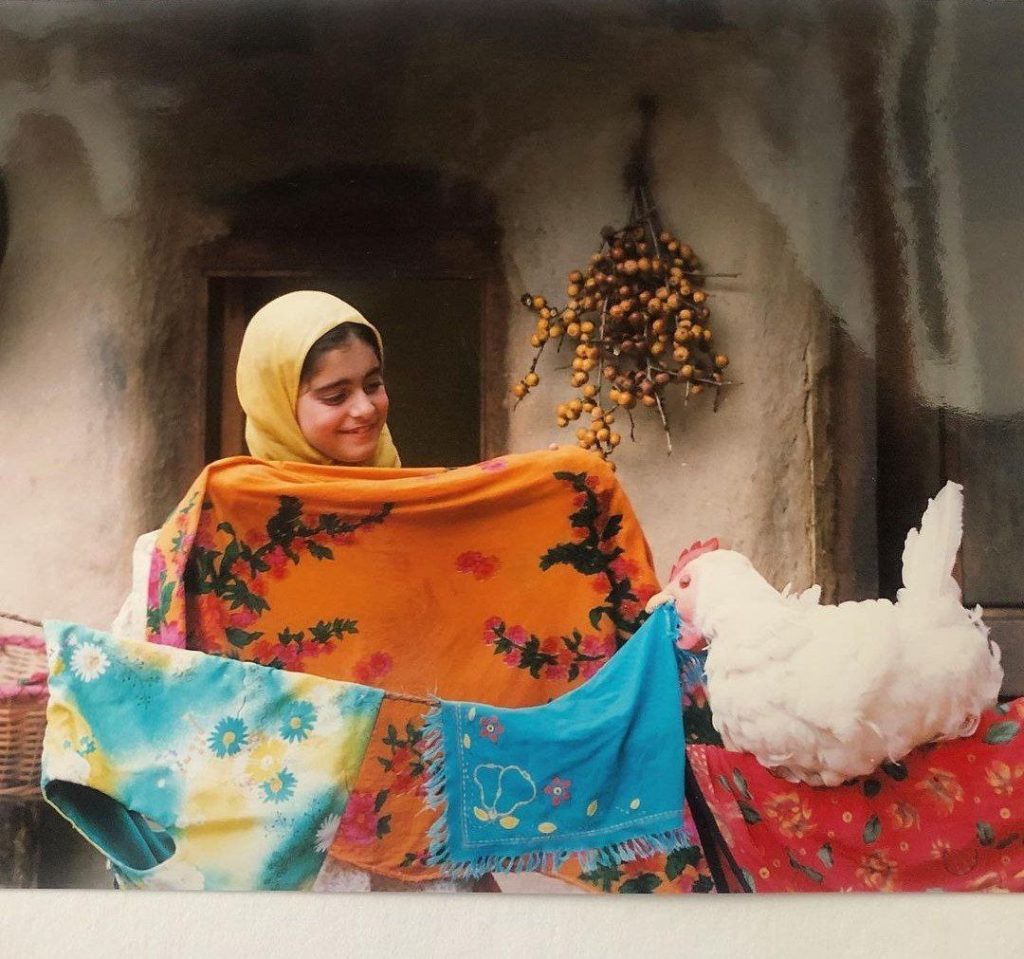
Golnar is a talented girl living with her grandparents in the North of Iran. She is a great cook and spends her day making delicious raspberry cookies. She also helps her talkative frog friend (Khaleh Ghoorbagheh) in protecting her 98 eggs from the mischievous stone-throwing kids. One day Golnar gets lost chasing her handkerchief carried by the wind into the forest.
She meets a bear couple and is taken to do their chores as the female bear is super lazy and the husband loves food. She is now trying to escape from the bears with the help of her dear frog friend.Golnar is a cheerful musical, with cute puppet animals and a nostalgic movie for the Iranian children. It’s full of energy and positive thoughts and can make you forget about the fast-paced modern life for a couple of hours.
Thief of Dolls/(1990) دزد عروسک ها
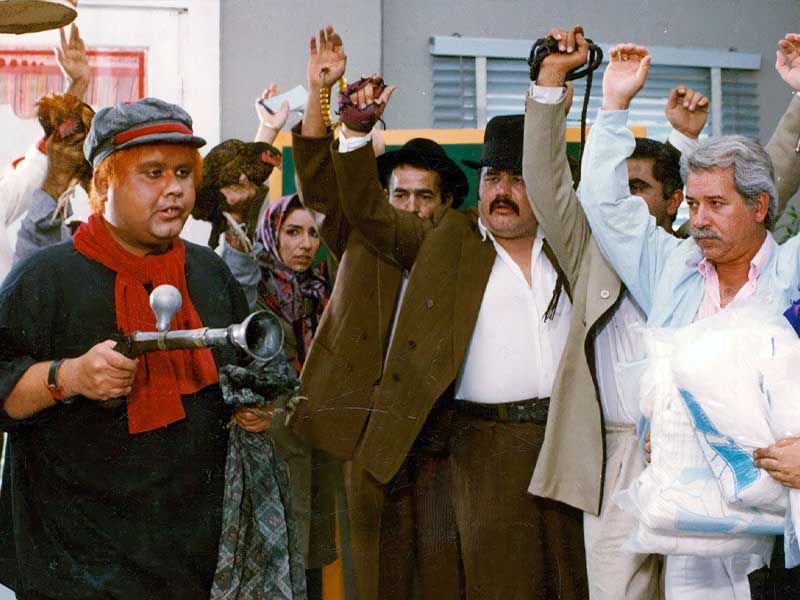
A Horror movie for kids might sound a little bit strange, but It’s actually a pretty common theme in Iranian cinema. Dozde Aroosakha is one scary movie, and even at this age, I’m scared of it a little bit. It’s the story of a city under the terror of a vicious old lady and her gullible son Ganjo. Leila, Bahram, and their mother live in a rented house owned by the old lady.
The children decide to sell their dolls to help their mother buy a house. Meanwhile, Ganjo finds out that these dolls come to life at night (creepy) steals the dolls, and runs away. The children start chasing after him and discover a dark castle full of mysterious adventures.
Although the movie is supposed to be comic and family-friendly, it’s the most scary memory of every Iranian child, which makes it unique in its own way.
City of Mice/(1986) شهر موش ها
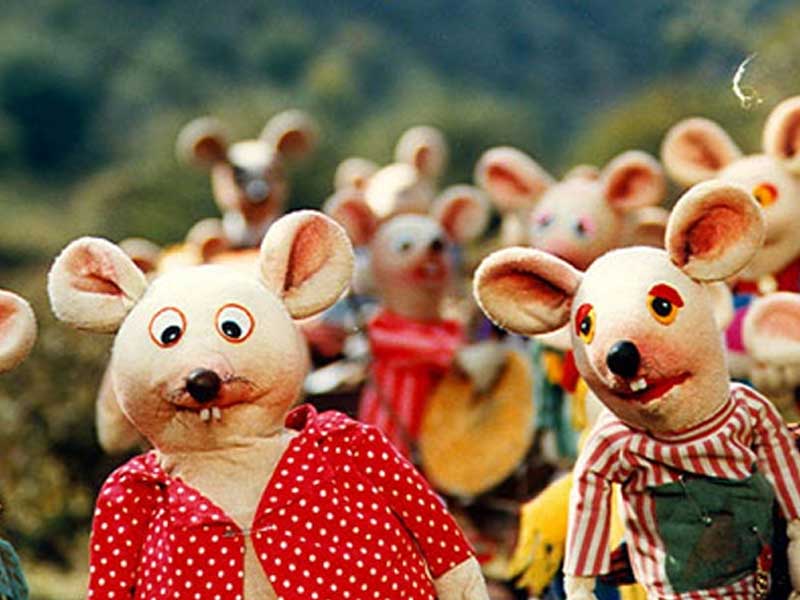
Our cute mice muppets are living a peaceful life, until “you know who” (a black evil cat) comes after them. The mice now have to immigrate and find the promised land, the City of Mice (where the walnuts jiggle around and “don’t say his name” isn’t allowed.) They start their journey as two groups. The adults take the short but dangerous way and the kids accompanied by their teacher and school’s chef take the longer safer route.
They will face many obstacles and become friends with some strangers, especially a Japanese traveler and Karate master called “Mooshiro Mishune.”.The City of Mice is a nostalgic musical and an important part of any Iranian child. The movie makes us laugh and teaches us important life lessons.
Swan Song/(2001) آواز قو
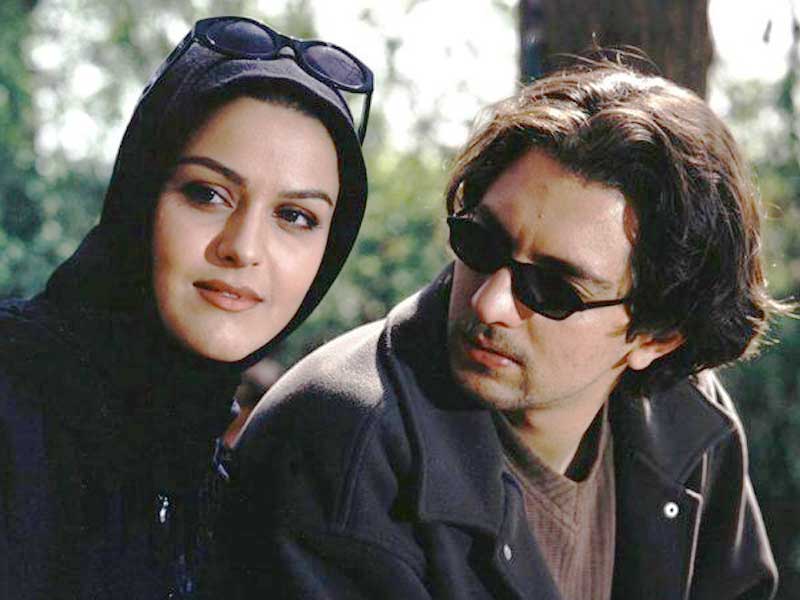
Peyman and Parastoo, a young couple in love, are driving when the Iranian police stop them and ask if they are related, when they answer differently to the questions of the soldiers they get arrested. (Some rules are vague in Iran and the Moral Security Police can arrest you for your hijab, or simply driving as an unmarried couple.) The hot-tempered Peyman loses his control for a second and accidentally injures a police officer. We have a good cop in our story called Officer Heydari, who tries to help Peyman throughout the movie.
Avaz-e Ghoo is a sad thrilling drama and the dialogues between Peyman and Officer Heydari show the huge gap between different generations in Iran.
So Close, So Far/(2005) خیلی دور، خیلی نزدیک
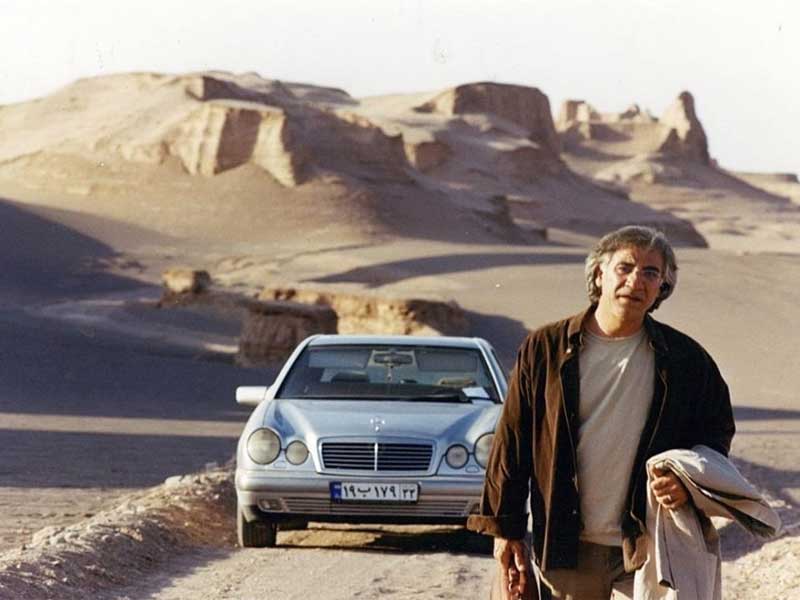
A workaholic neurosurgeon, Dr.Alam starts driving to the desert in search of his Son, Saman. The boy is an amateur astronomer when he finds out that his son’s test results indicate a terminal illness. It’s Saman’s birthday and the father wants to give him a brand new telescope before the meteor shower starts. The father and son have a fairly thin relationship as the doctor is addicted to his job and hasn’t invested in spending time with his family.
In search of Saman, he meets a young medical student called Nasrin with a charming accent and deep philosophical views. Nasrin starts helping the doctor locate Saman while also visiting village patients and treating them. The movie shows how far we can get from our family and the people of our country without even realizing it. It talks about hope, love, and the subtle details in life.
Gold & Copper/(2010) طلا و مس
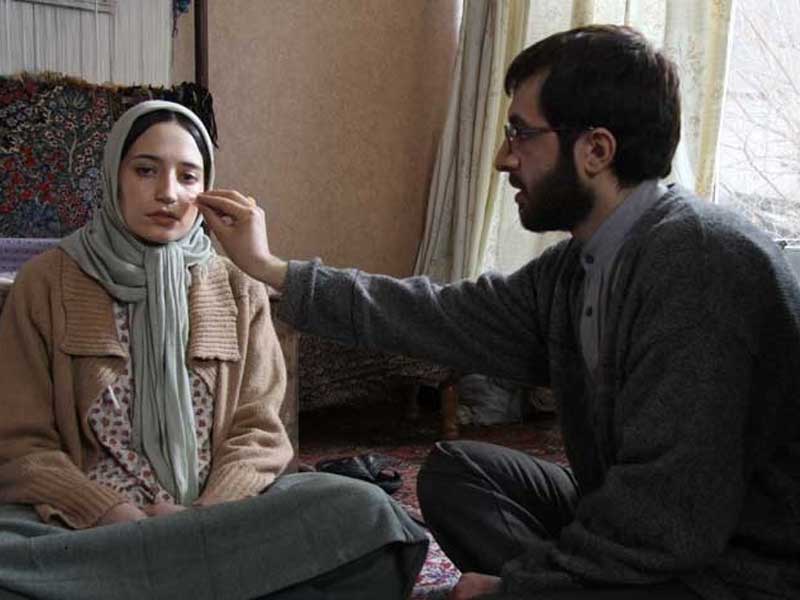
A young married mullah obsessed with religious lessons lives with his wife and kid. The wife works really hard both by doing the house chores and rug weaving. When she becomes weak and ill, the mullah has to finally take his head out of the books and get in touch with the real world. Tough life makes him more mature as he starts weaving rugs himself and learns to appreciate his wife and all her efforts. He finally understands the religious teachings through love and experience rather than books, and religious masters.
Captain Khorshid/(1987) ناخدا خورشید
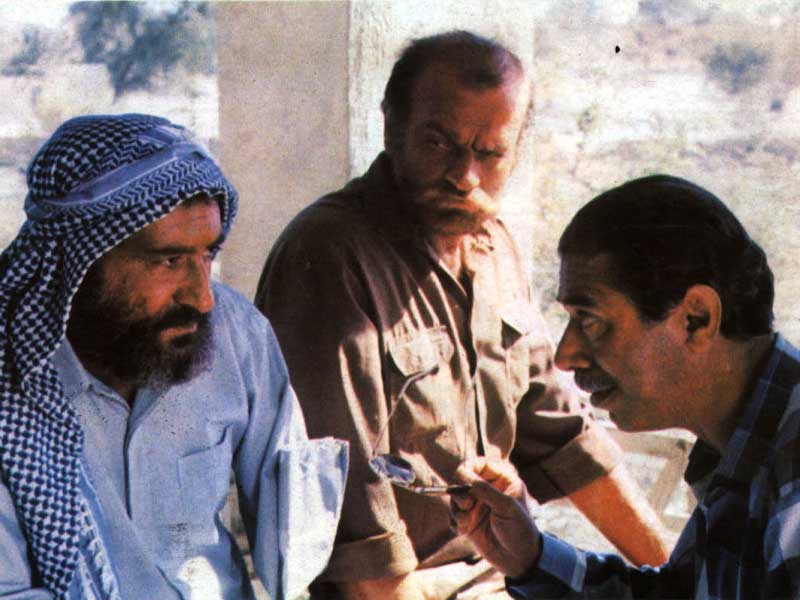
Nakhoda Khorshid, a charismatic smuggler in the south of Iran, lost a hand many years ago and is now witnessing his life’s savings get burned by the police. With nothing to lose, he is willing to do anything to get his money back before the police seize “Bambamk”, his loyal boat, and gets involved in the business of smuggling people. He is also planning revenge on his old enemy, Khajeh Majed, a rich paralyzed merchant who was the one behind the seizure of Khorshid’s load of cigarettes.
Based on Ernest Hemingway’s novel “To Have and Have Not,” Nakhoda Khorshid is a thrilling drama exhibiting the life of a tough, proud captain in the struggle. Other than the picturesque shots of the sun and sea, we can enjoy subtle production details like the authentic costume design and the introduction of cultural beliefs in supernatural beings like Jinn.
Penniless/(2010) بی پولی
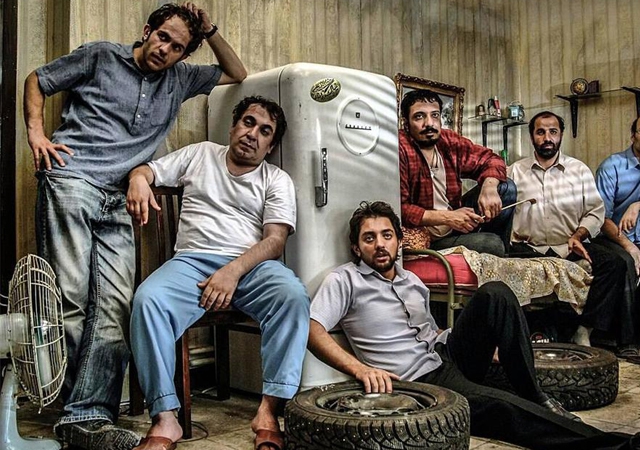
The movie starts with Iraj, an arrogant, narcissistic fashion designer, and Shokouh, a simple-minded rich girl getting married and starting their life. Iraj gets fired from his job, and can’t find a job that would suit his prestige. To save face and pride, he starts stealing and selling his wife’s jewelry and becomes friends with an interesting group of jobless people. This part of the movie is the peak of its comedy, as these people, each having their own unique storyline teach him how to waste time and try to help him by presenting short-term solutions.
Eventually, he confesses to his wife, and they start to face real life, learn important lessons, and get mature together. The movie is packed with funny scenes, unique characters, and situational comedy.
the Mother/(1991) مادر
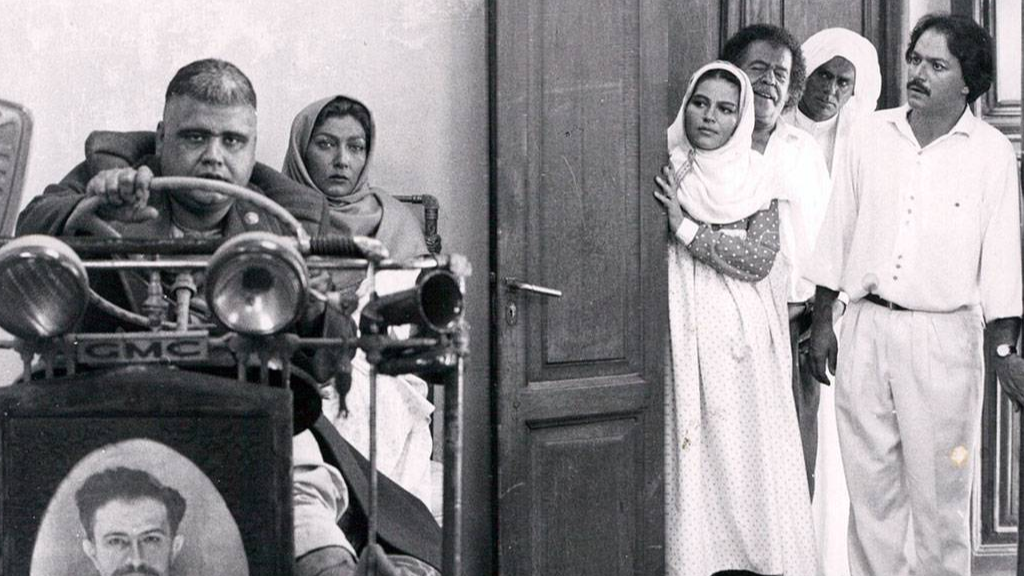
Children of a family gather to spend the last days of their mother’s life together. We slowly get to know the characters, the detailed stories behind their lives, and some hidden secrets of their parents. Besides having their own personal life issues, there is a deep-seated animosity between the two of the brothers which the mother tries to resolve. This gathering is a fresh blow of calmness into their modern, routine, or rough lives. The experienced and mythical mother (who knows the time of her death by the way) glues the broken parts of her children and creates a charming atmosphere before her death.
“Madar” doesn’t need a complicated storyline, it’s a masterpiece in simplicity, with lovely traditional Persian music. Even if you can’t fully appreciate the rhythmic dialogues in Persian, you can enjoy the cultural details, the Persian spirit, and the picturesque shots of the main location which is a gorgeous traditional house with a pond in the middle surrounded by flower pots.
Postman Doesn’t Knock Three Times/(2009) پستچی سه بار در نمیزند
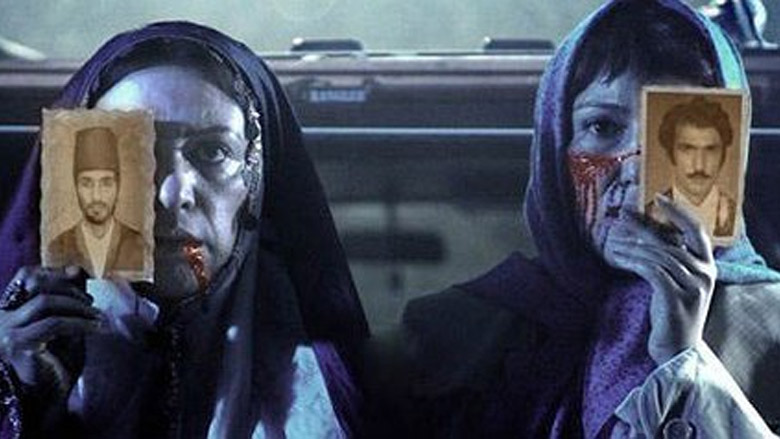
This musical thriller occurs in a world of fantasy and nightmare in a terrifying deserted house. The relationships between couples on different floors of this house illustrate the Iranian culture in three recent generations. Using rhythmic dialogues, Persian music, and exaggerated characters, the movie shows how the culture and its issues, complexes, and norms have changed and reshaped. Following these mysterious characters, we have the opportunity to get familiar with subjects such as religion, lust, prejudice, and love in a unique way.
Brick and Mirror/(1964) خشت و آیینه
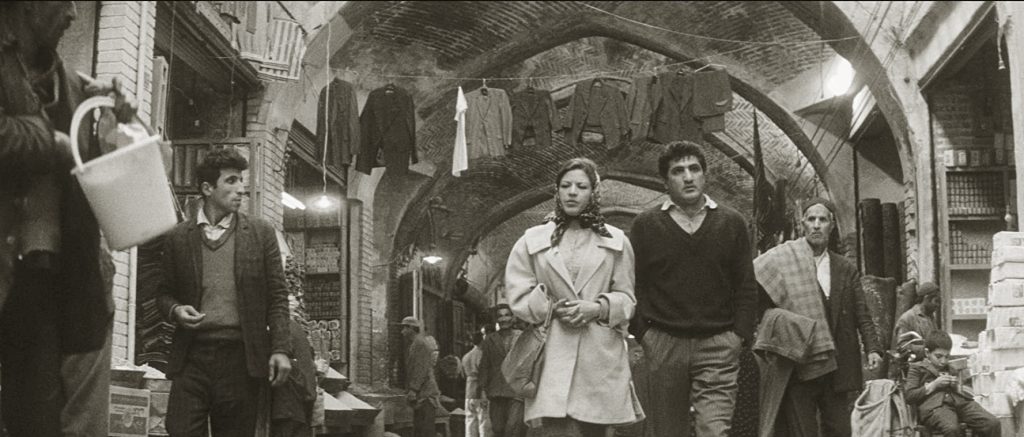
Kheshto O Ayeneh was created 12 years before Martin Scorseisy’s famous masterpiece, Taxi Driver. The starting atmosphere of the movie where Hashem, a night shift taxi driver, is roaming the streets of Tehran with illuminating billboards in the dark background of the night reminds us of Travis’s struggles in Taxi Driver.
A woman leaves a baby in Hashem’s car which becomes the main subject of our story. Hashem goes after the woman in every direction, only to find the desert, a long stairway, and a ruined house full of mysterious people, and no answers. He takes the baby to his usual cafe where his mistress Taji works. Brick and Mirror proposes cultural and sociological issues and manifests the Iranian society in the 1960s and its struggles with modernity, and human relations.
White Meadows/(2009) کشتزارهای سپید
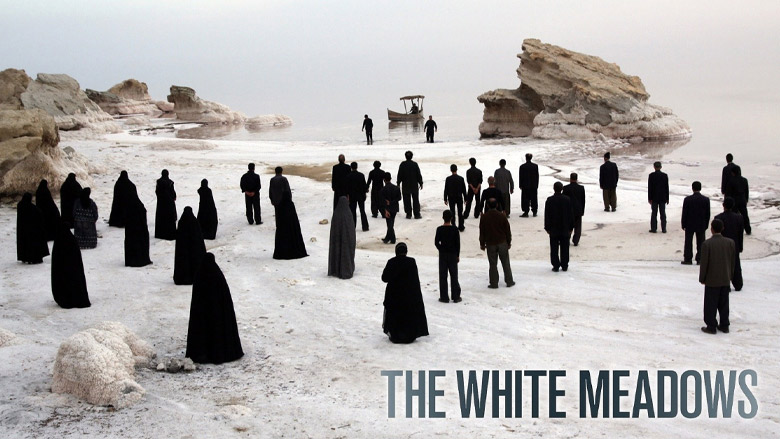
White Meadows is a semi-fictional drama following the life of Rahmat, a middle-aged boatman who lives in a world of salt lands and salty water. As the tear collector, when there is a funeral or if someone has a deep sorrow and is ready to cry, Rahmat is there to listen to their misfortunes and collect their tears.
In this surreal world, he encounters mysterious strangers who believe in suspicious traditions. These extreme rituals are deeply rooted in Iranian traditions but are exaggerated to prove different points. If you like unconventional cinema, scenic wide shots, and the beauties of Lake Urmia, White Meadows is the perfect movie for you.
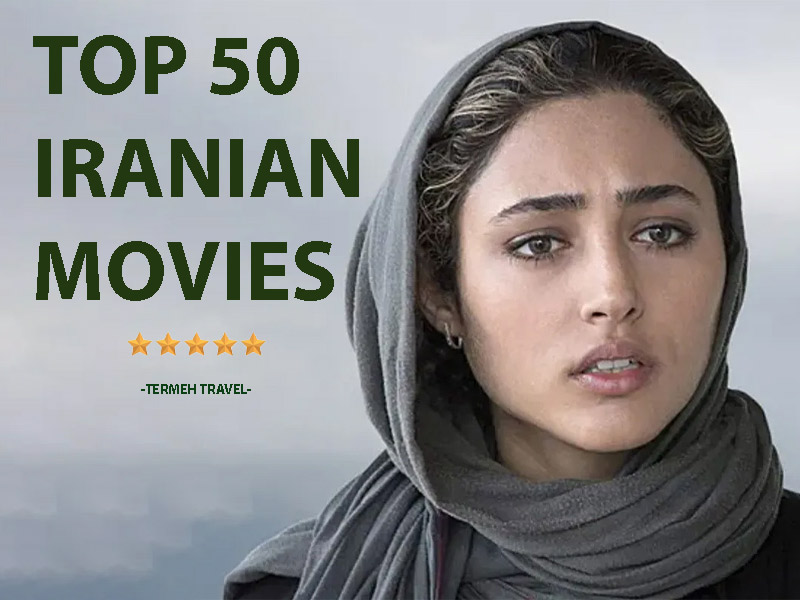
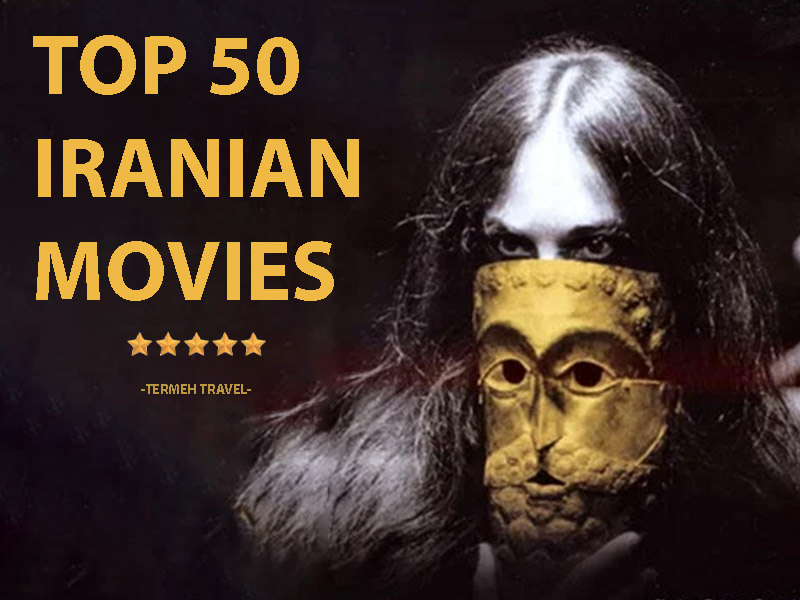
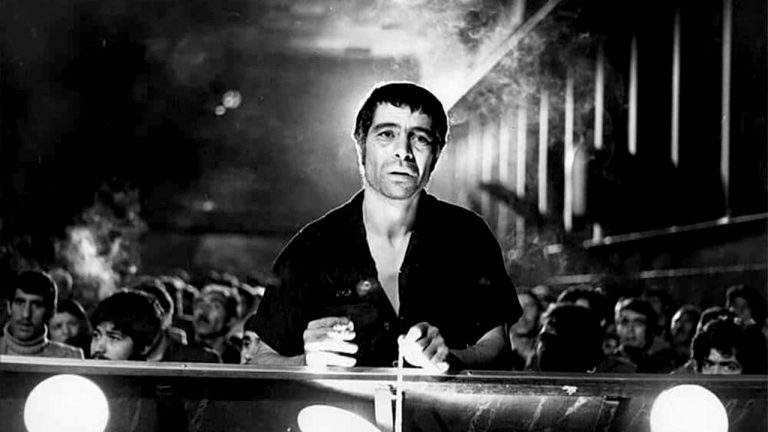



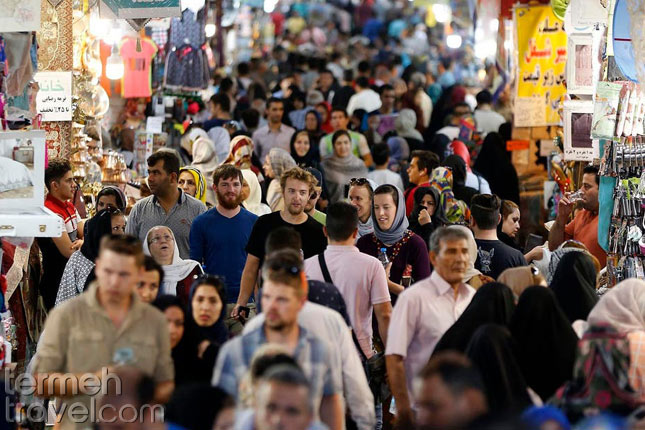

Leave a Comment